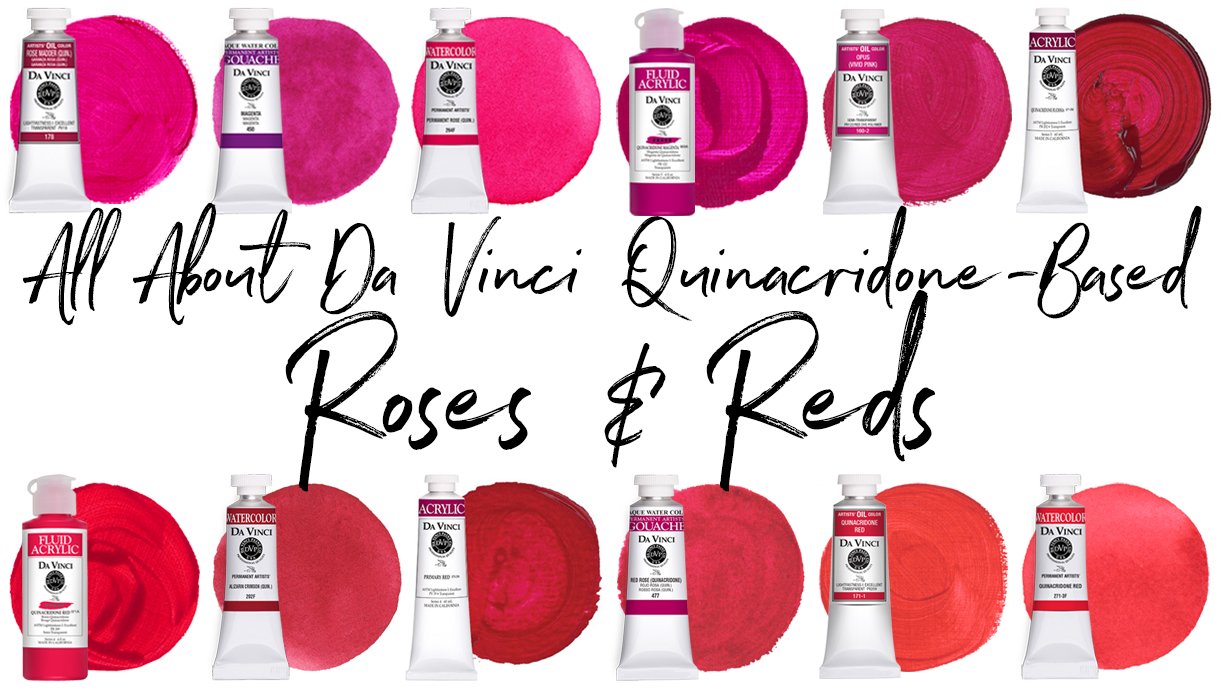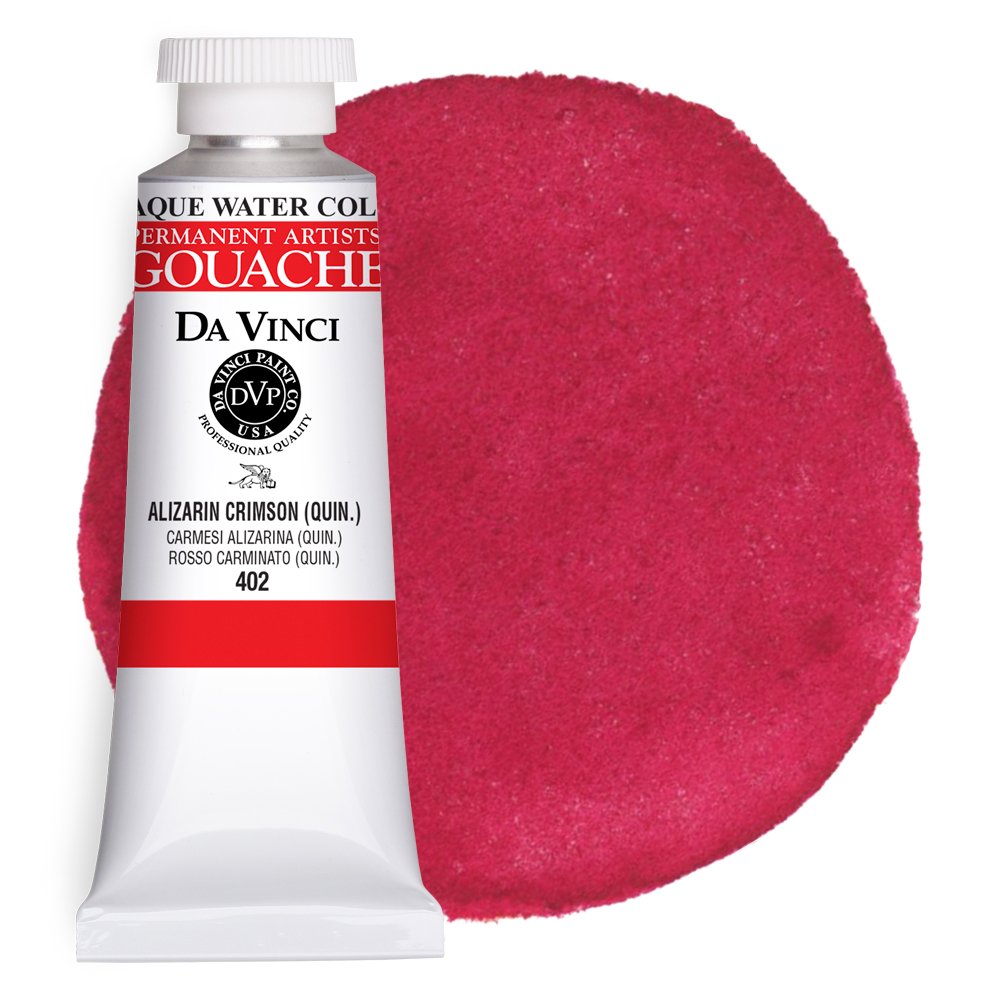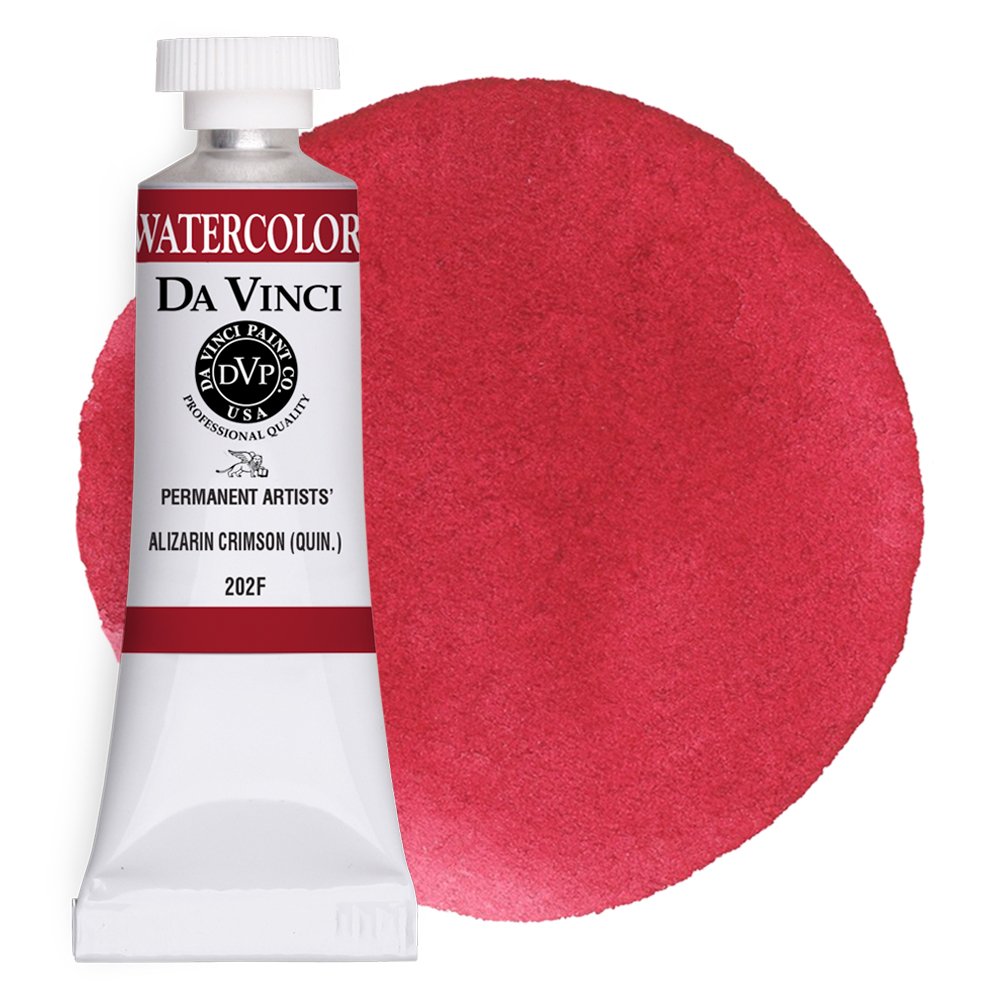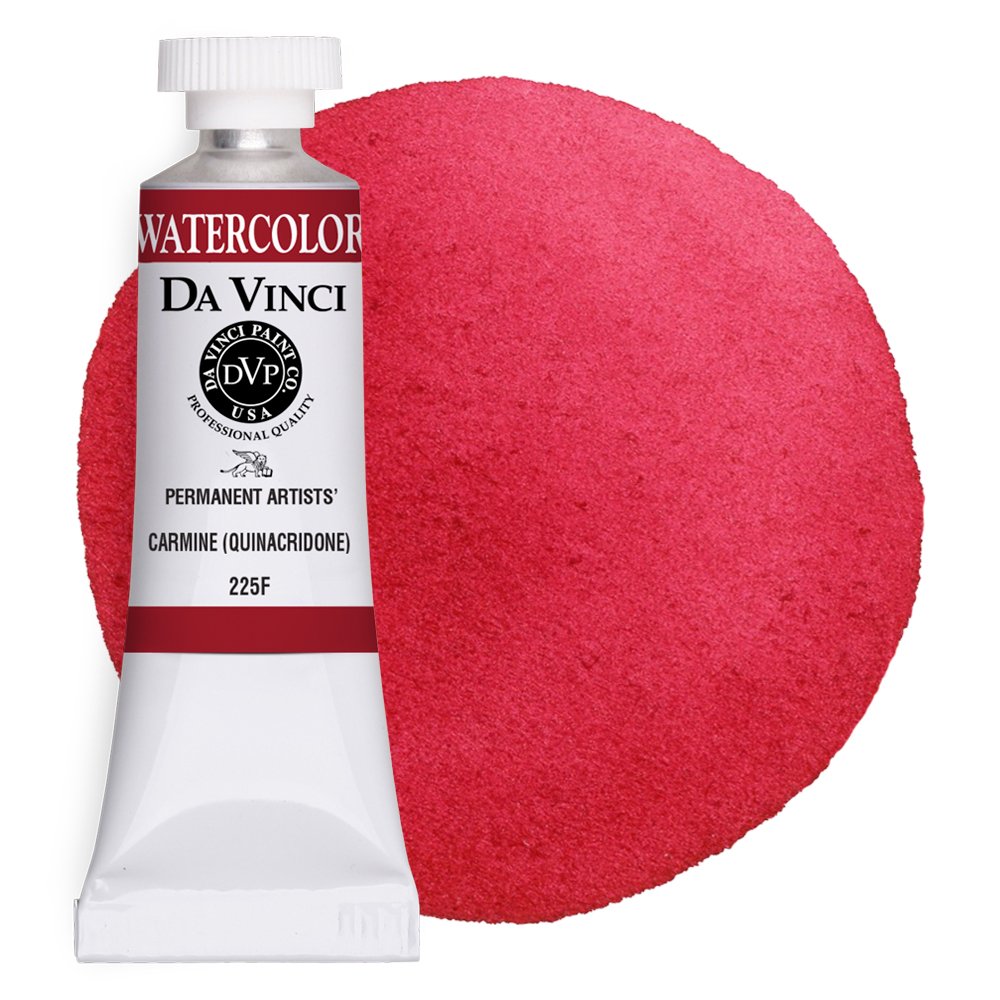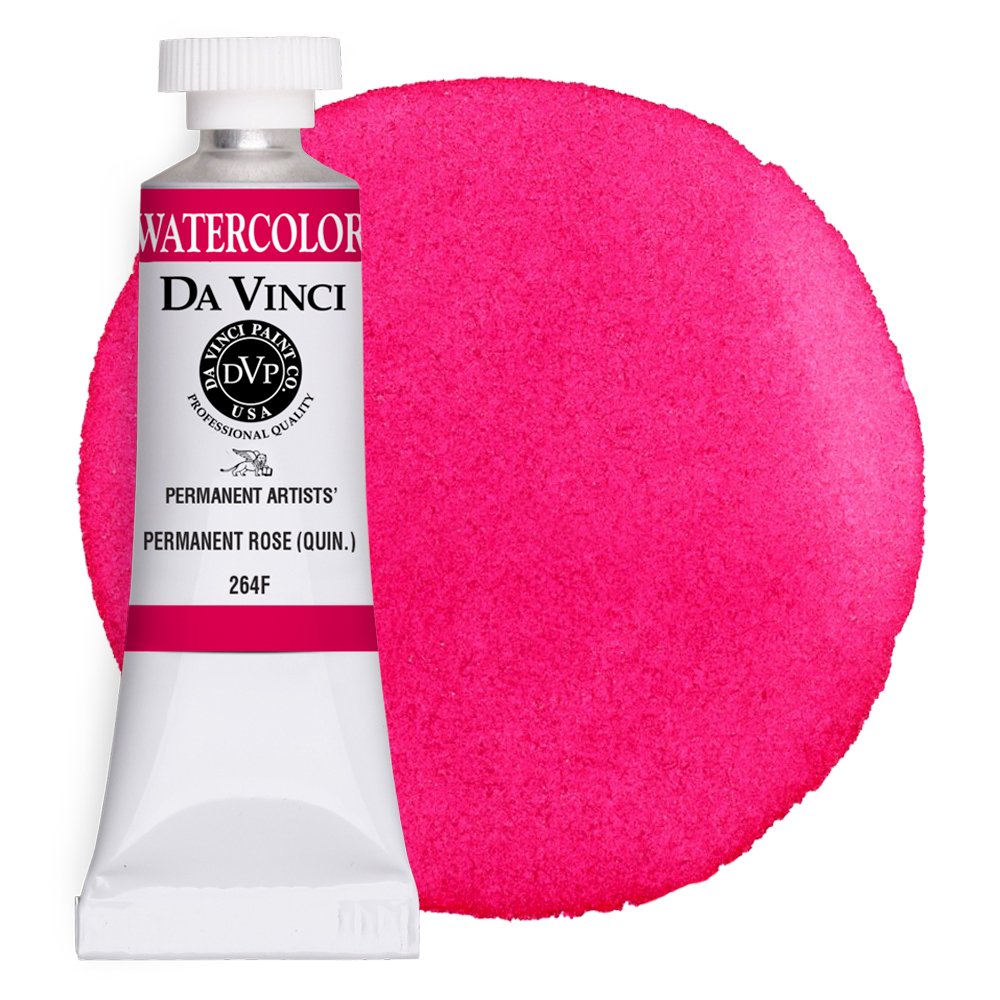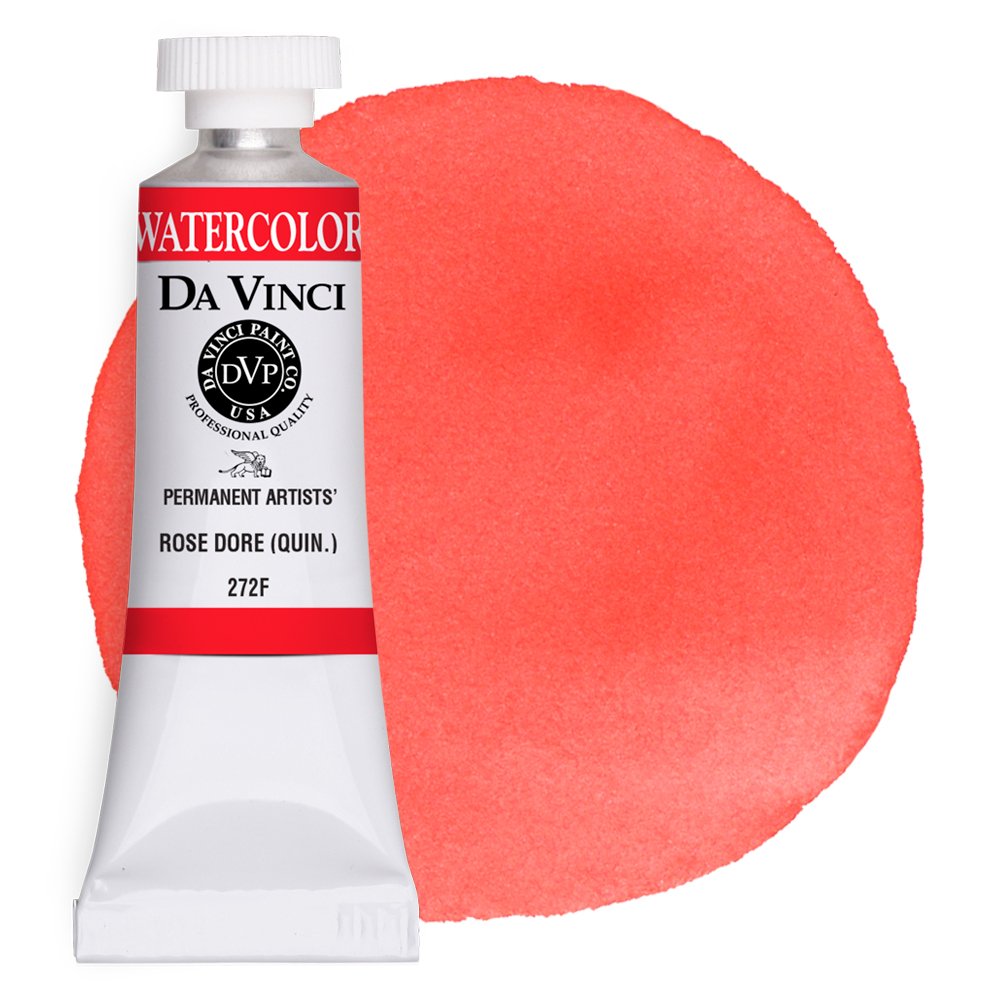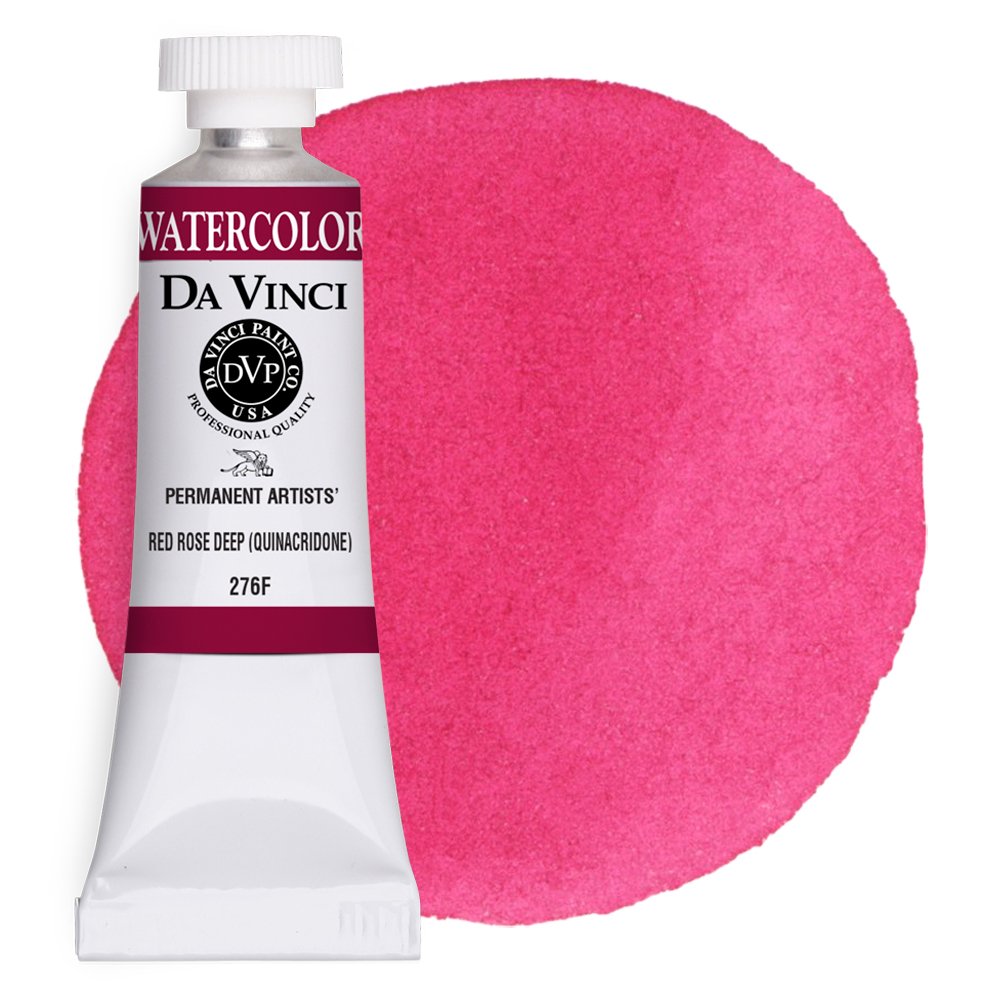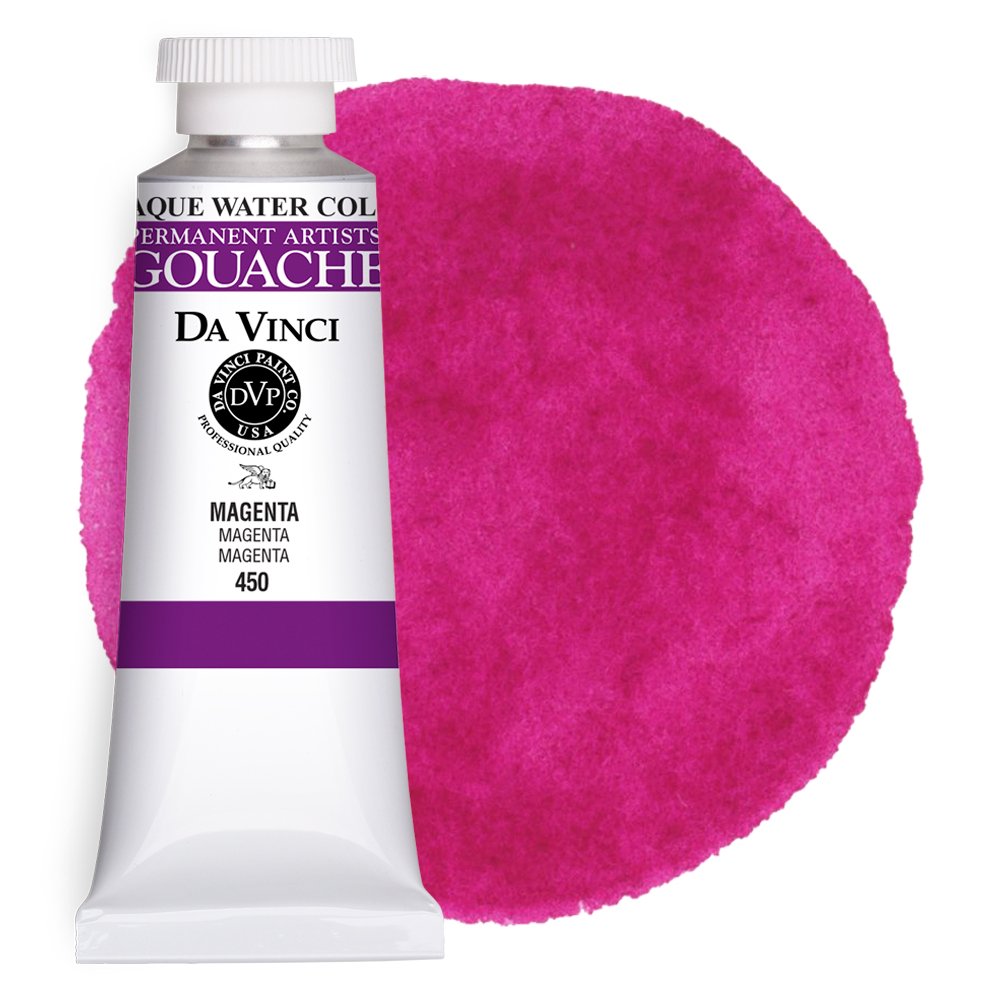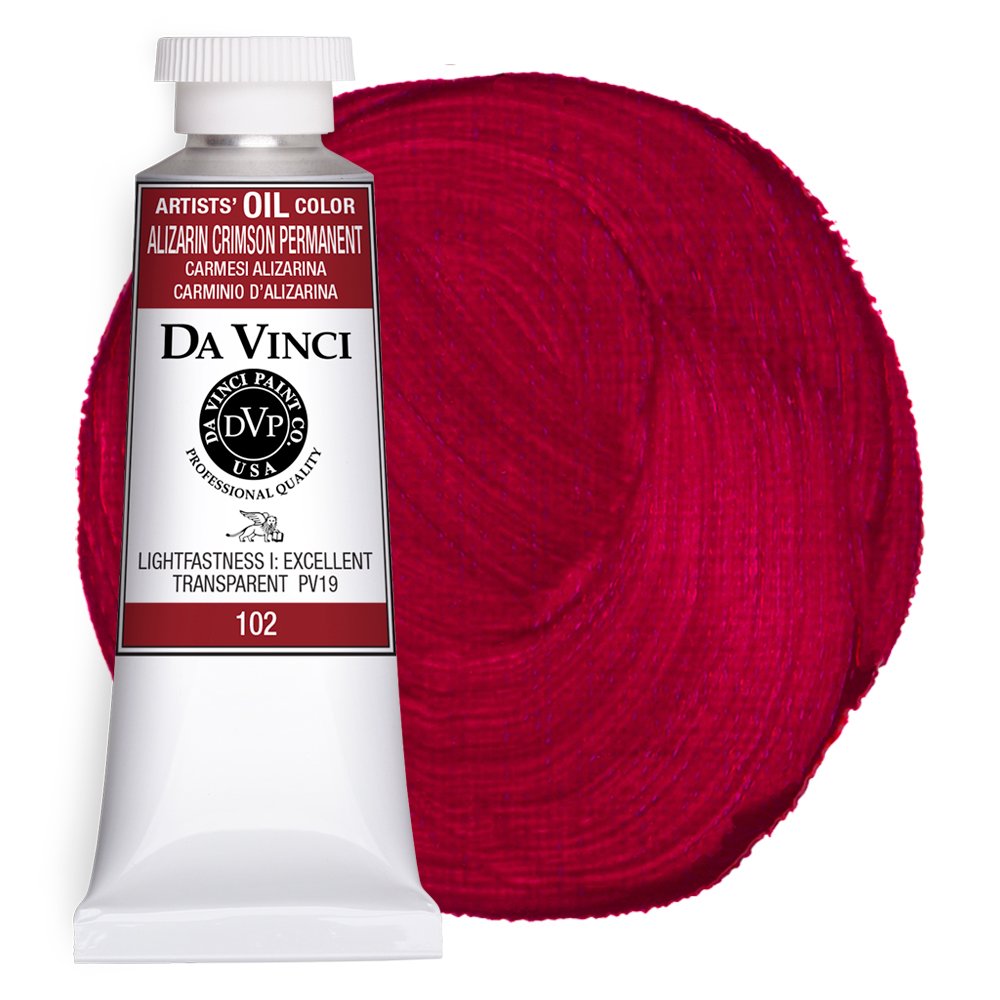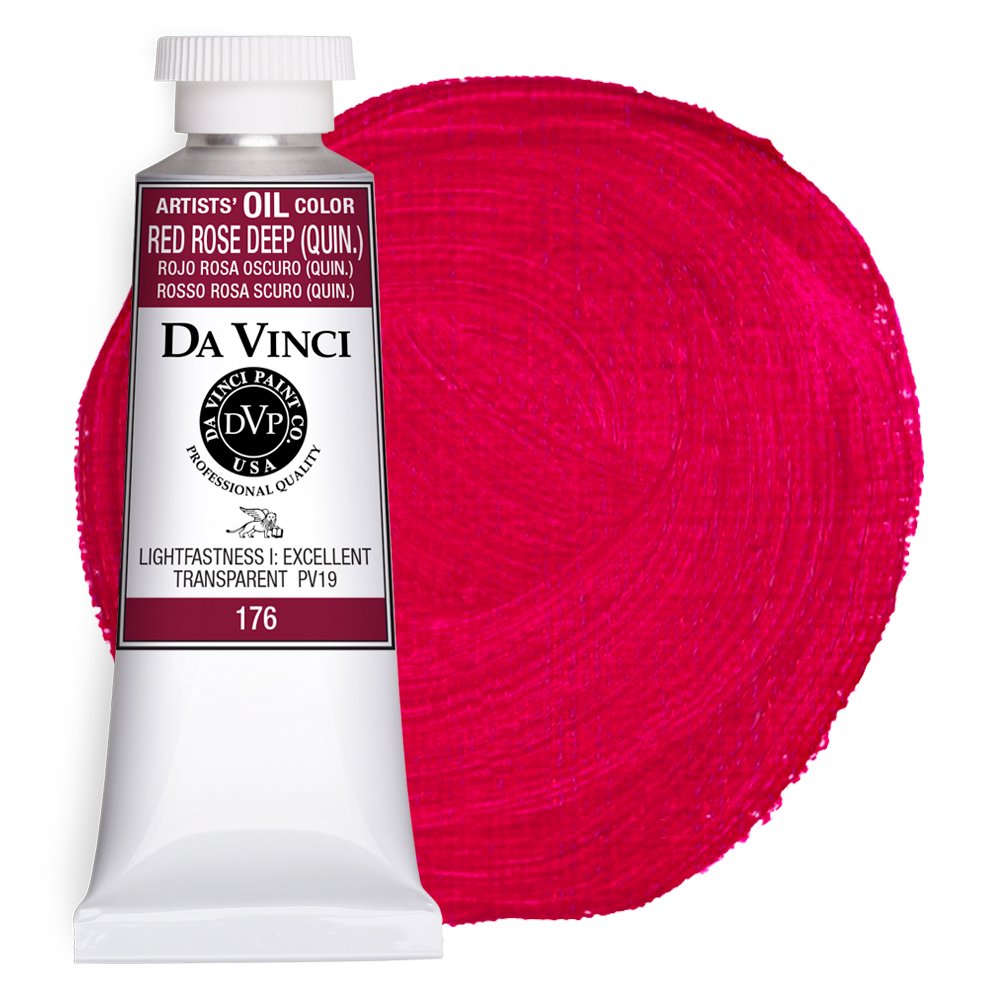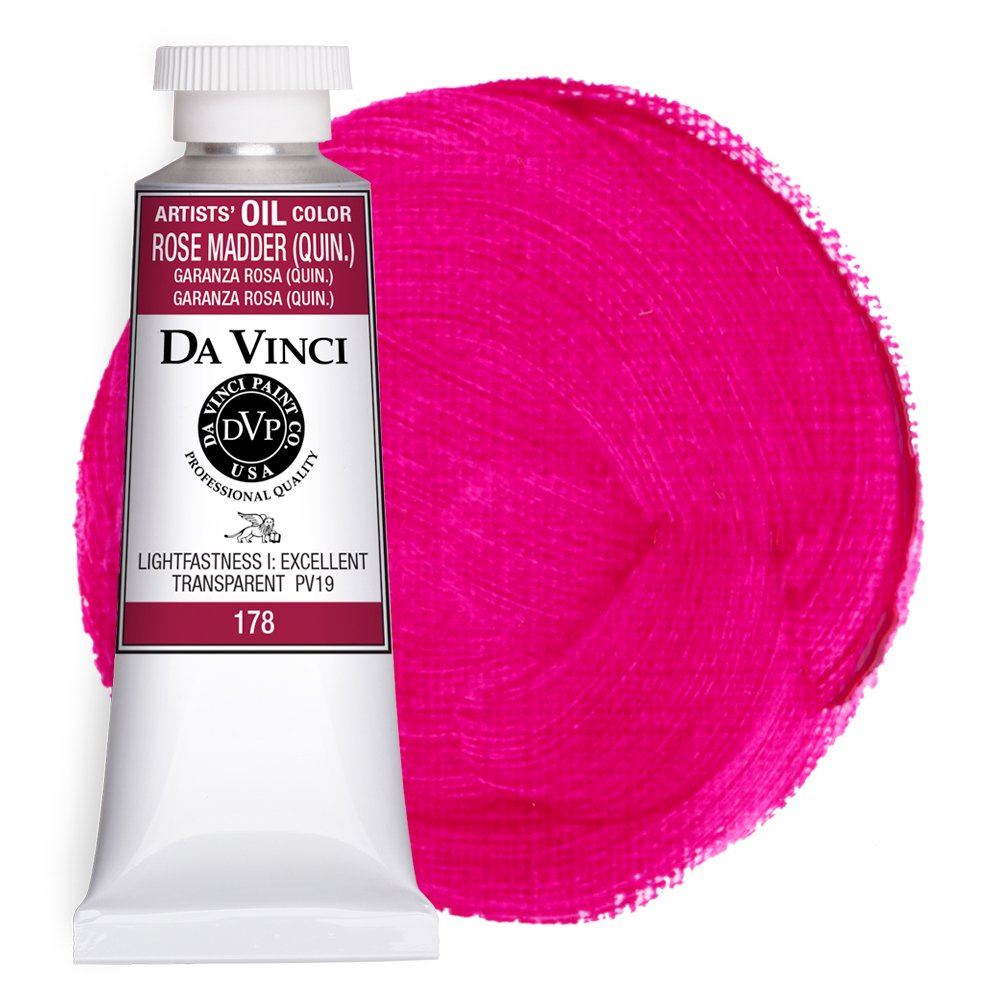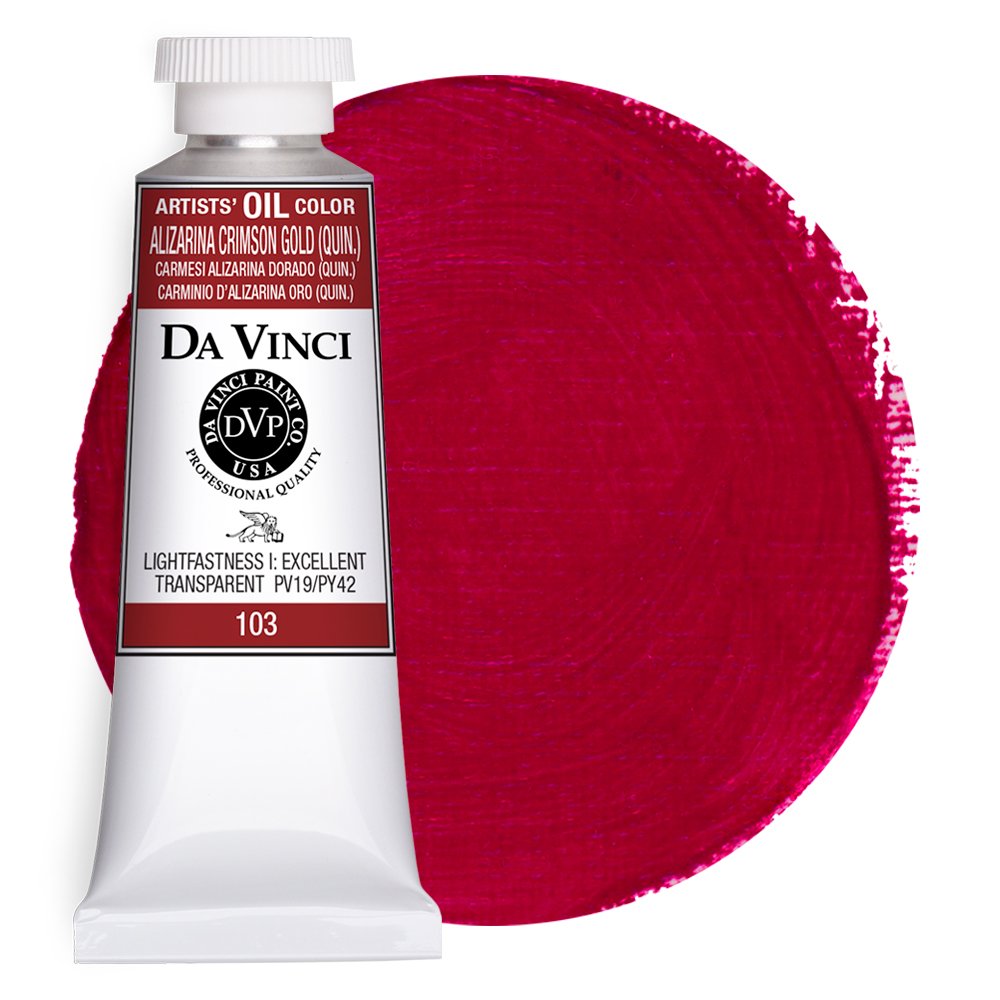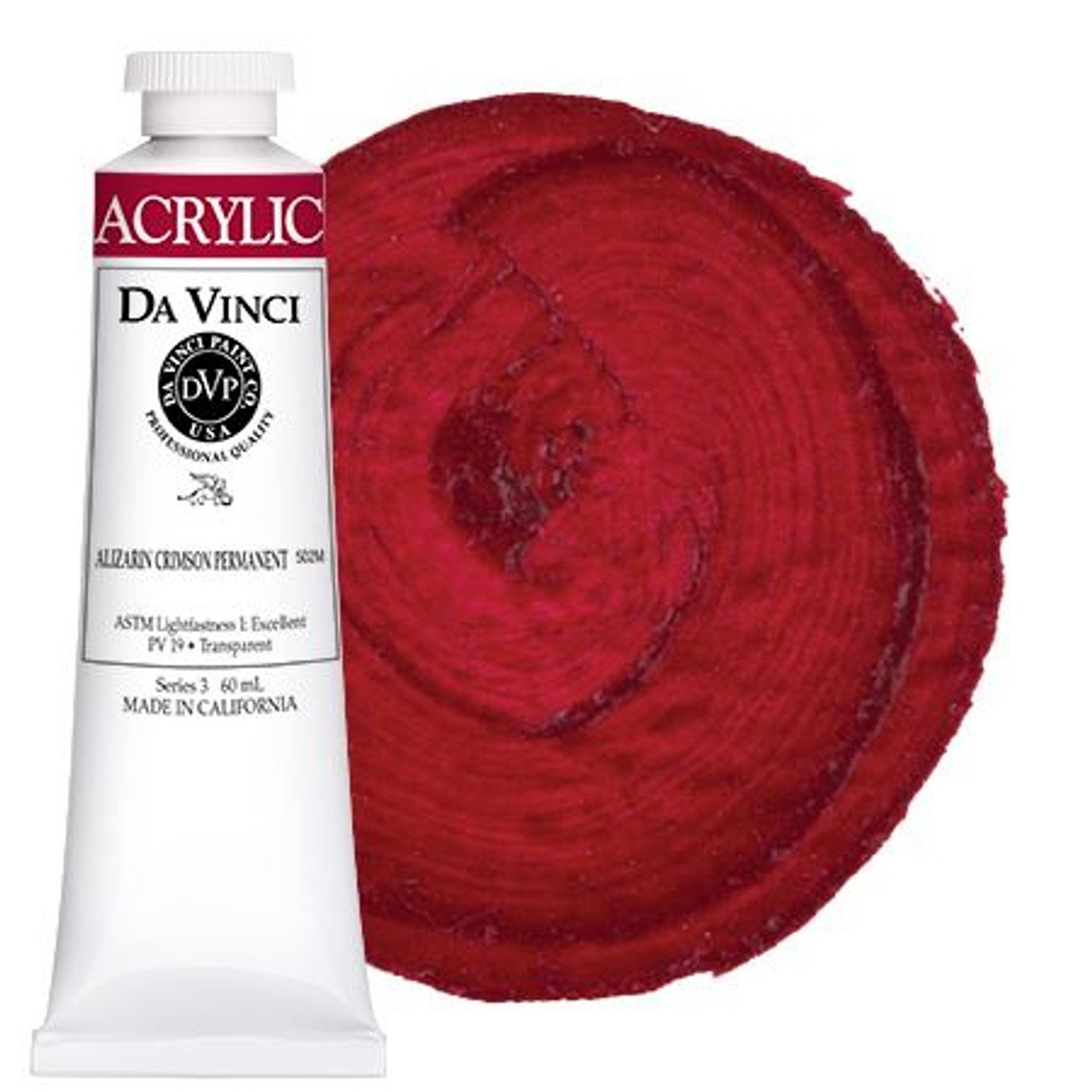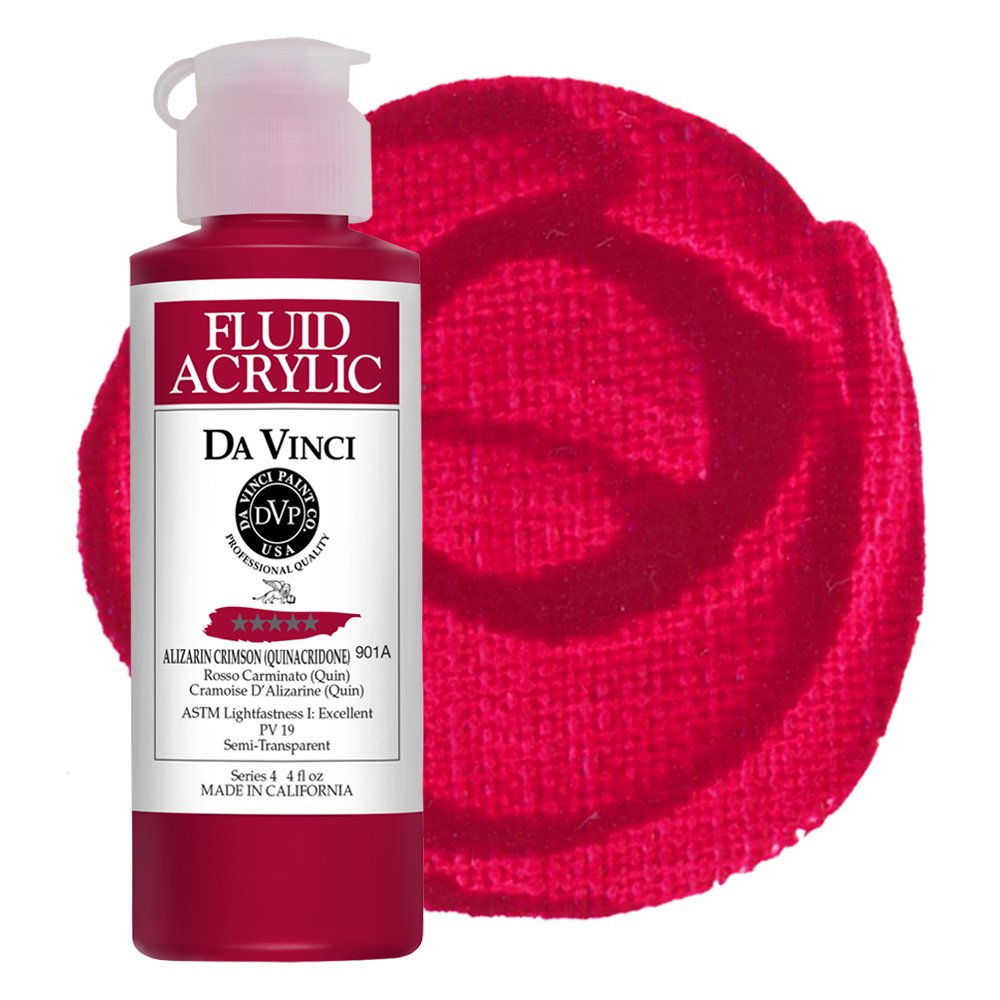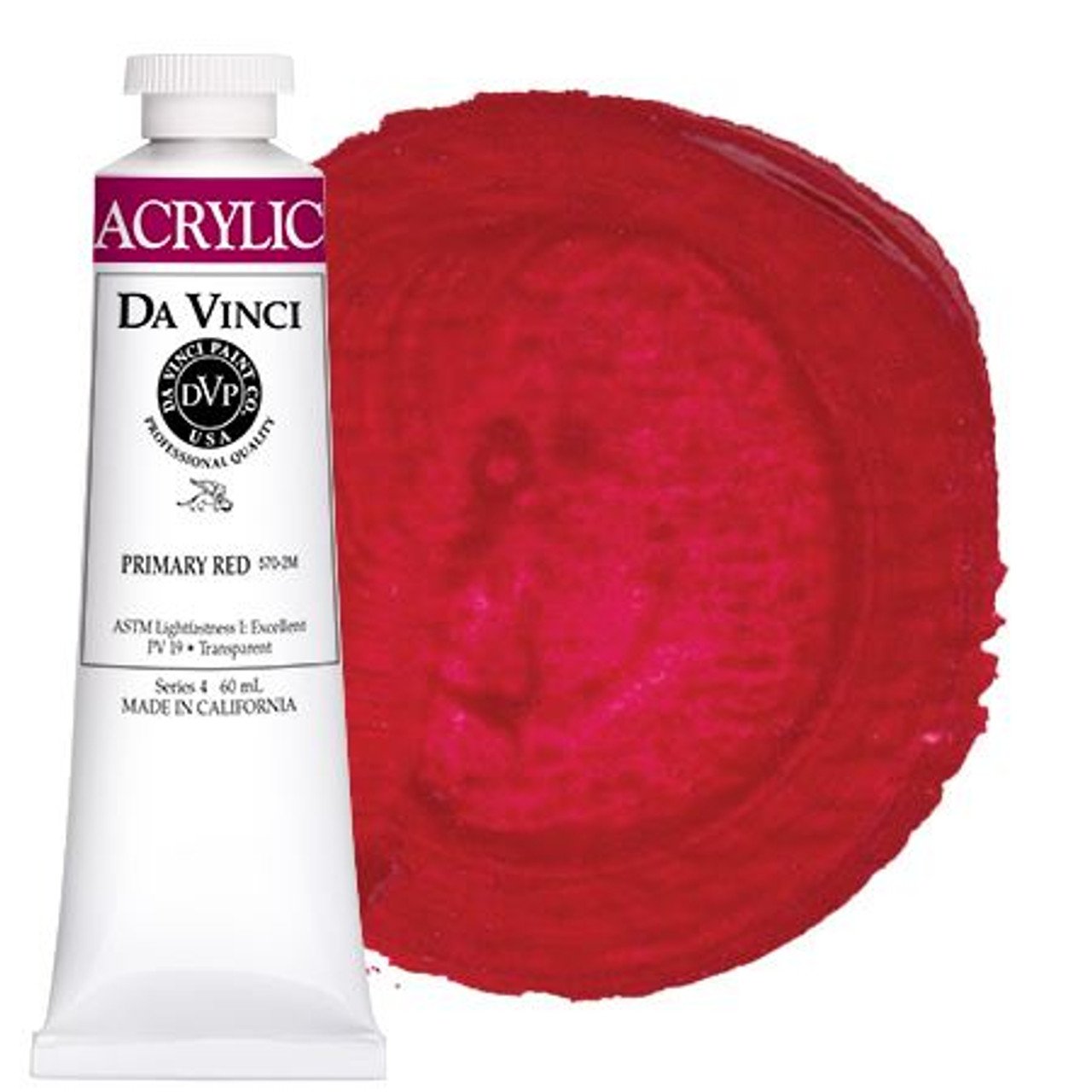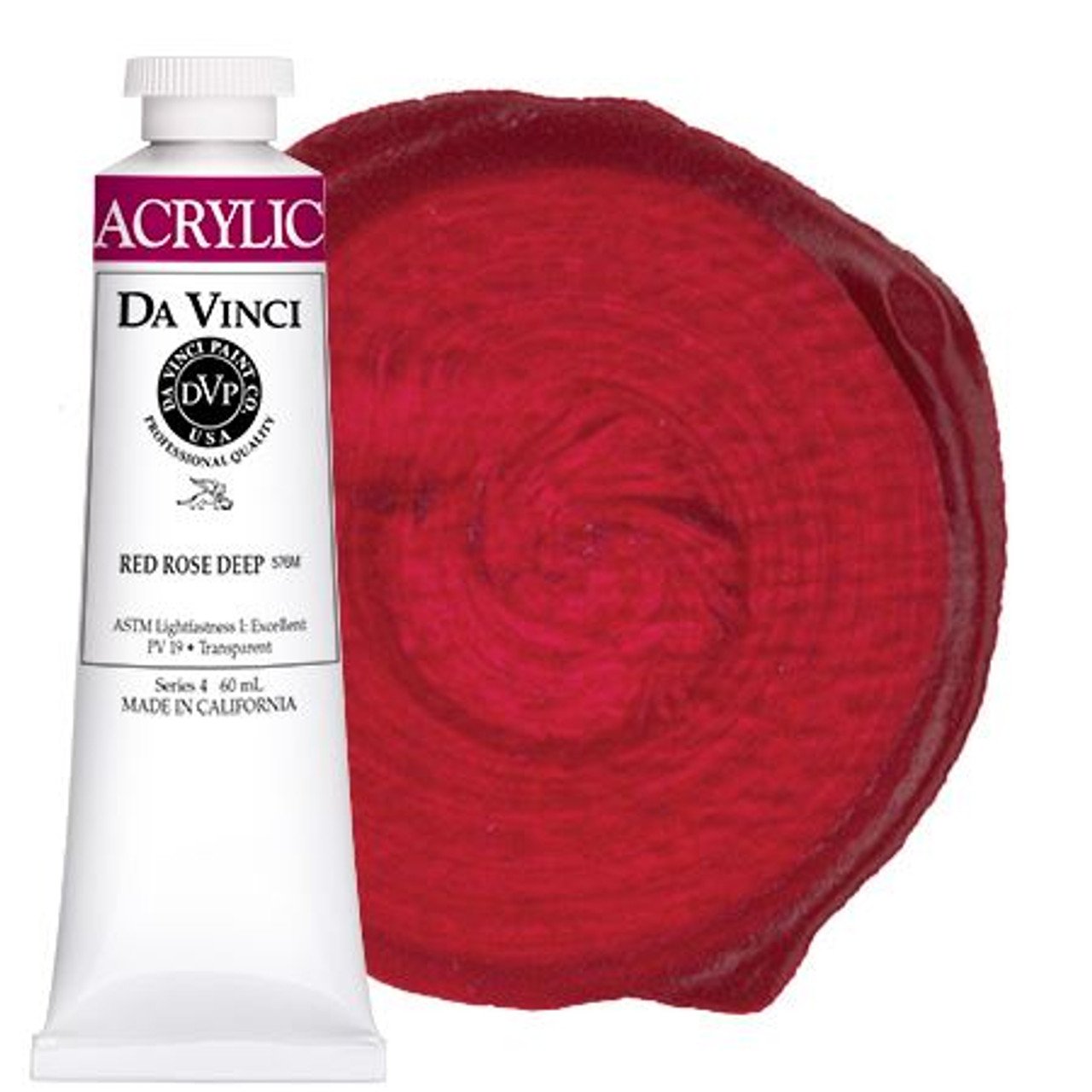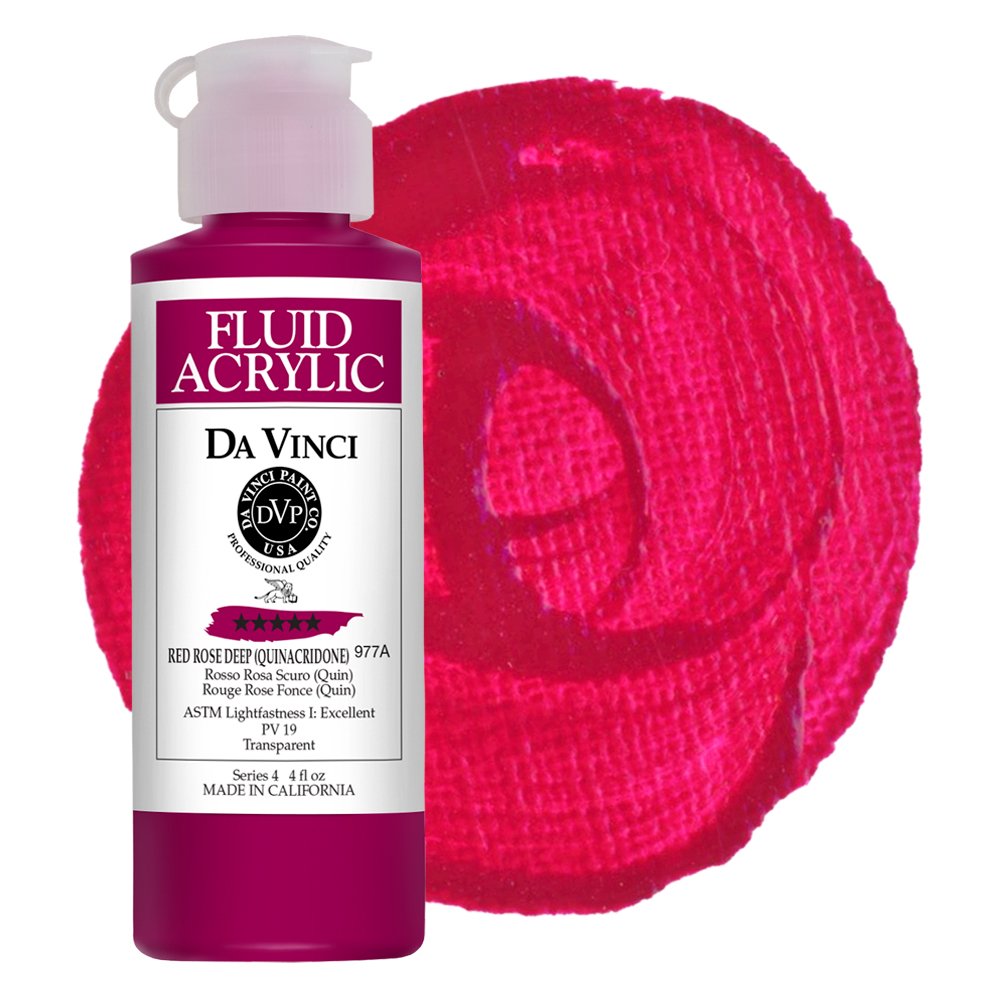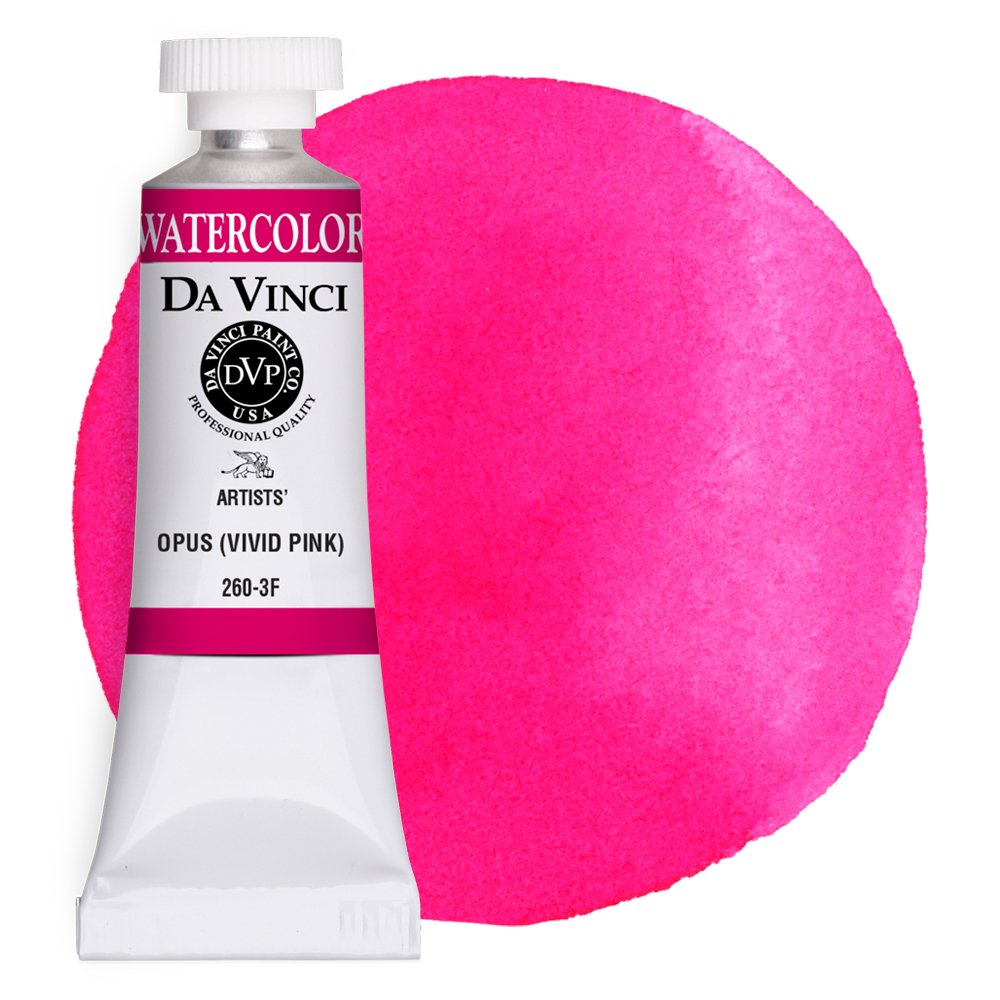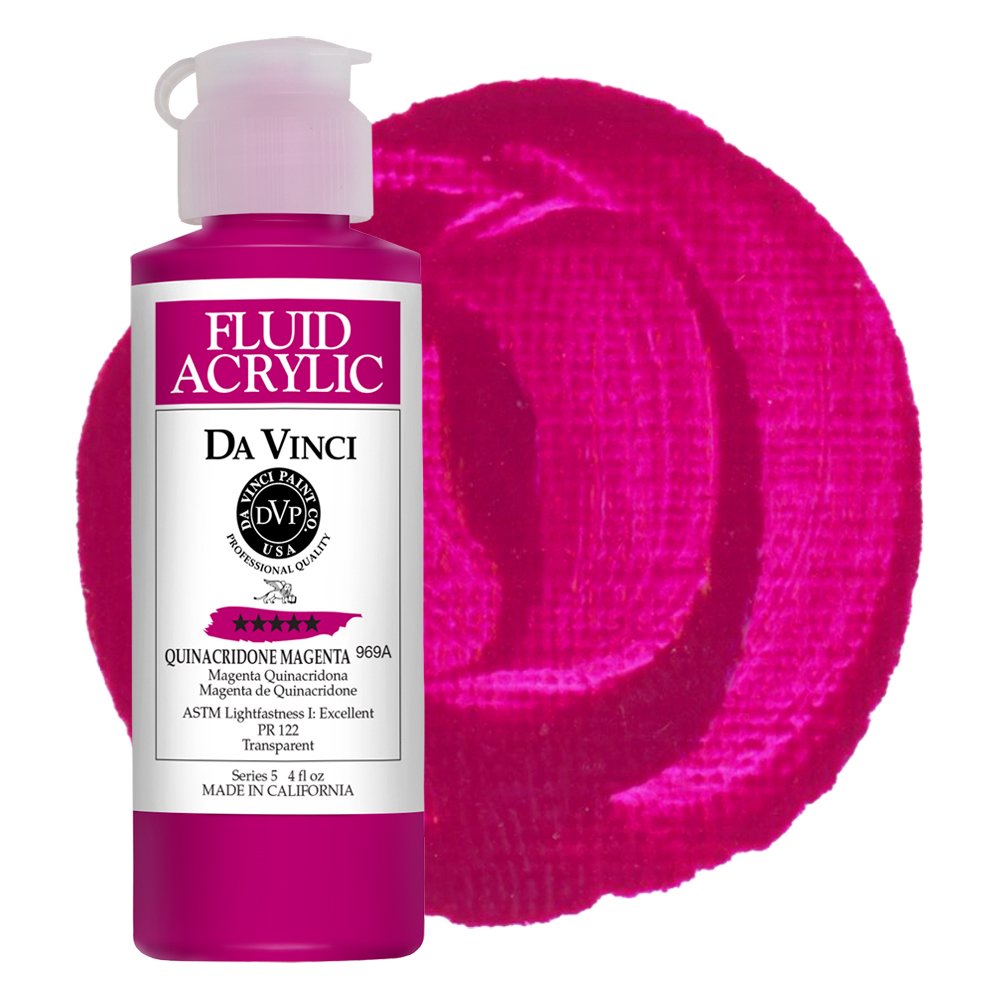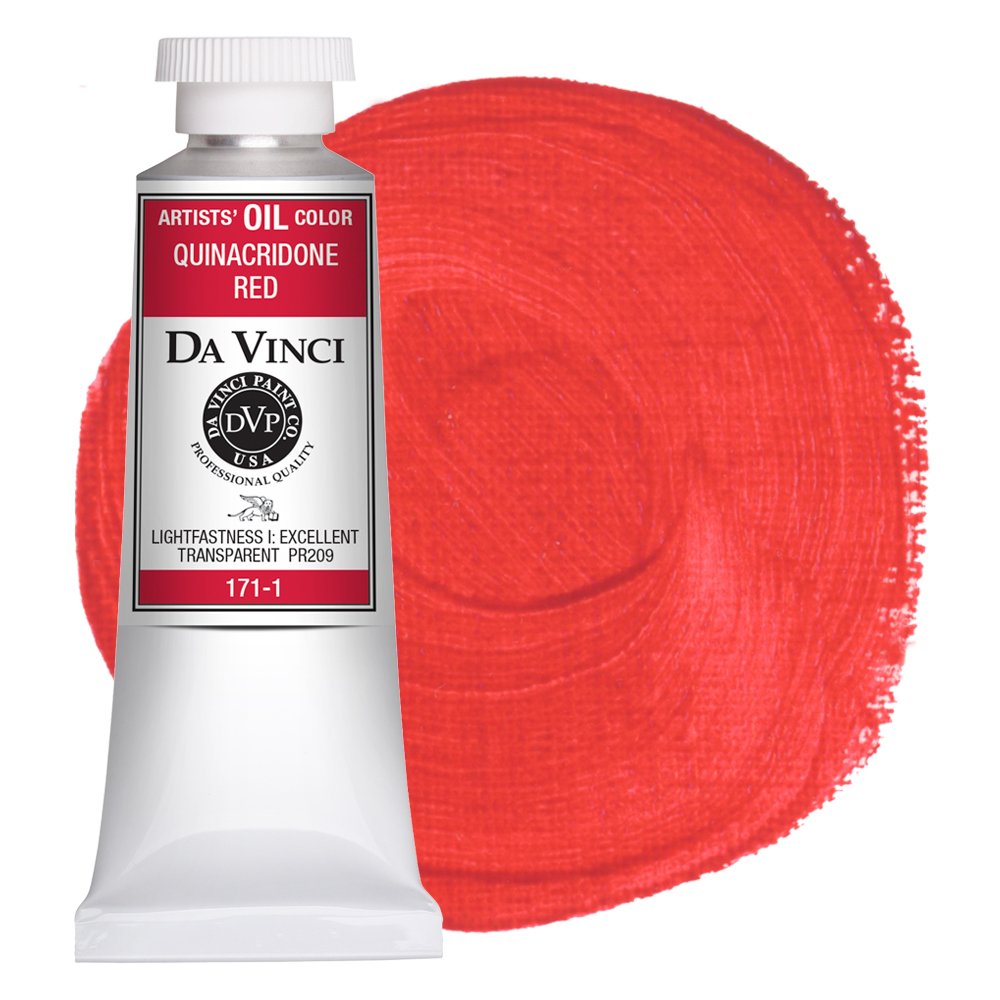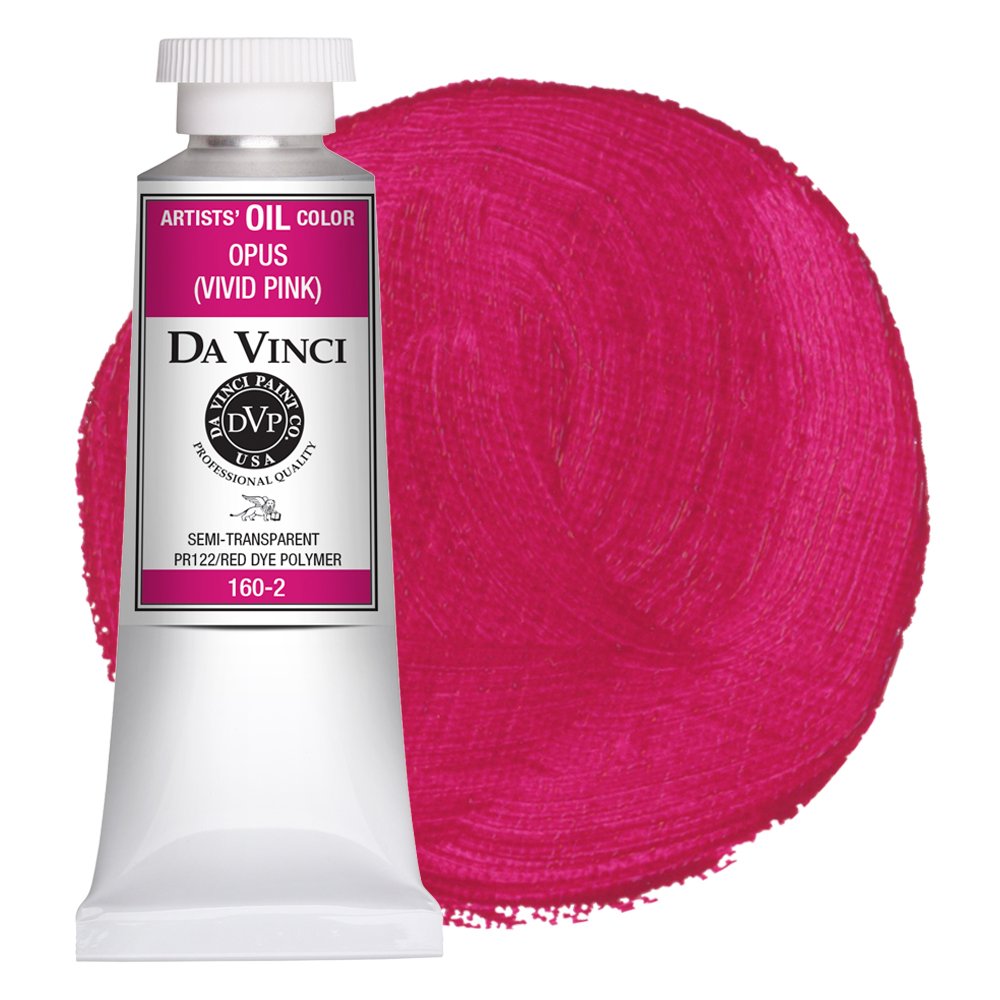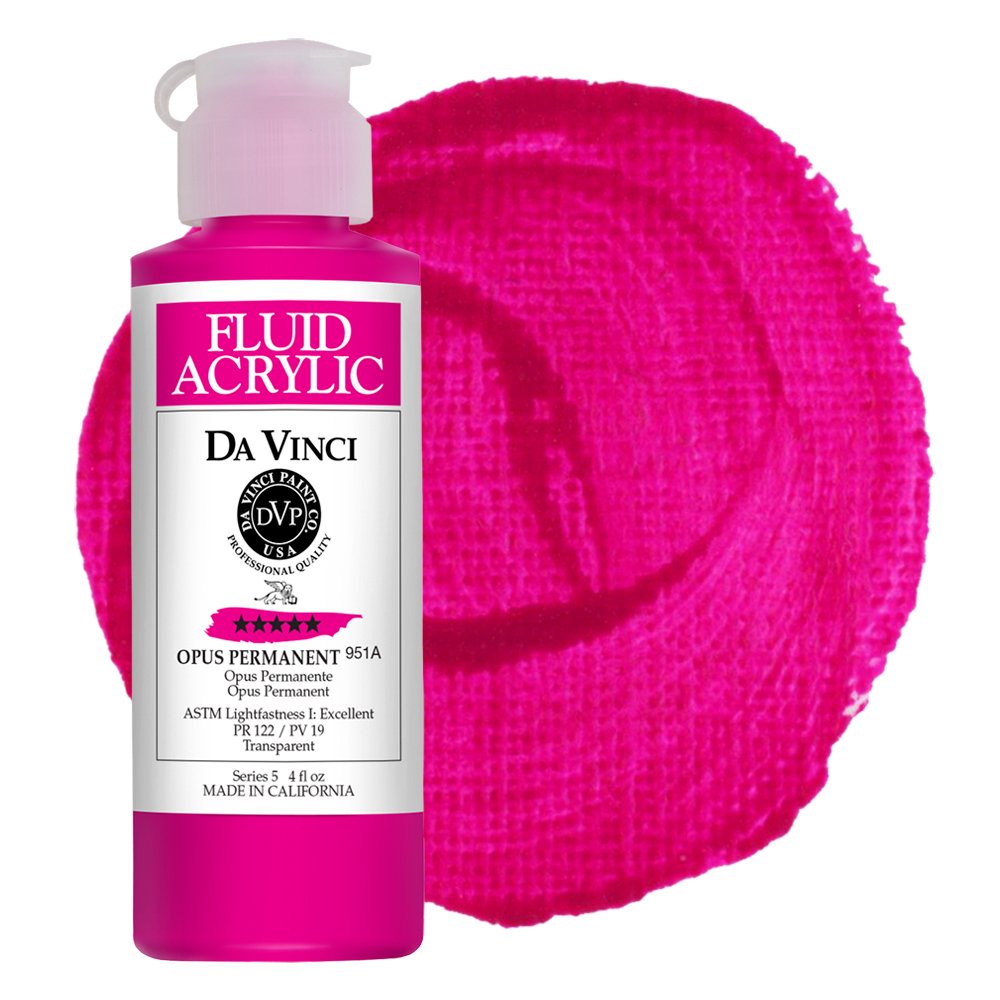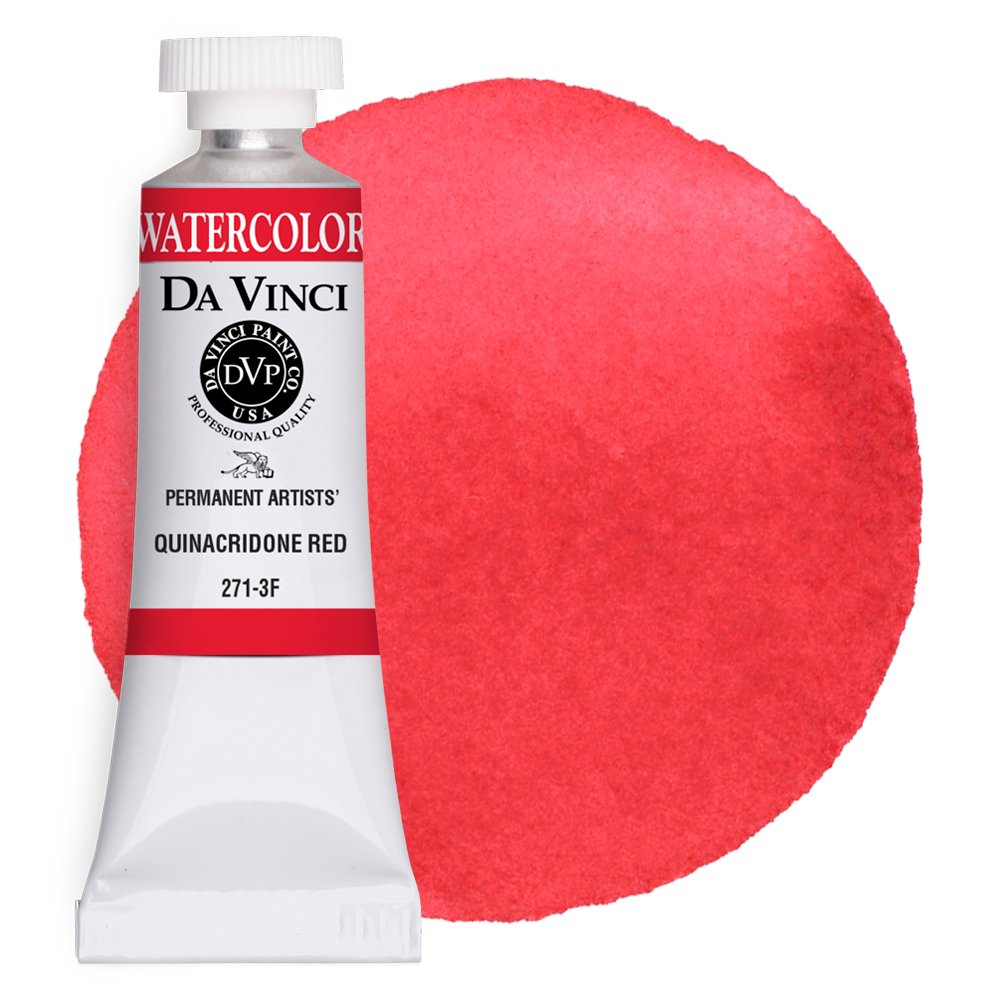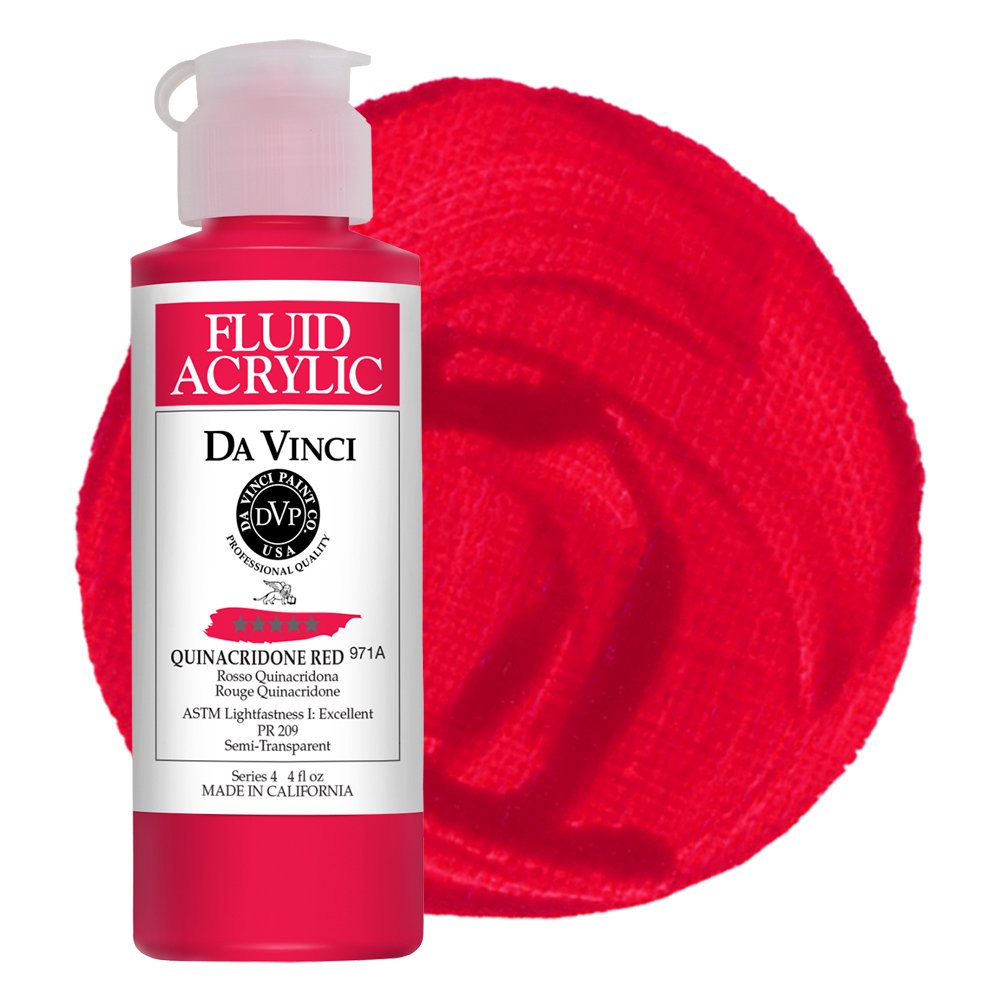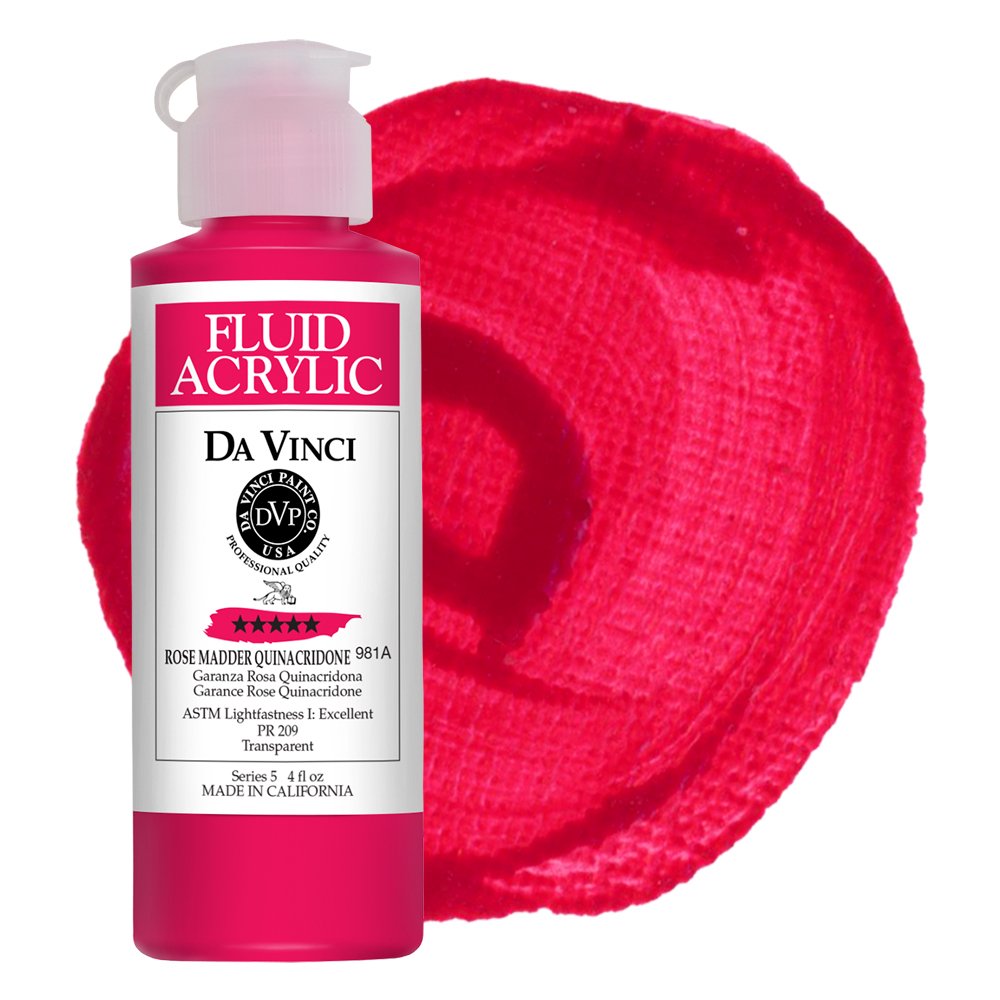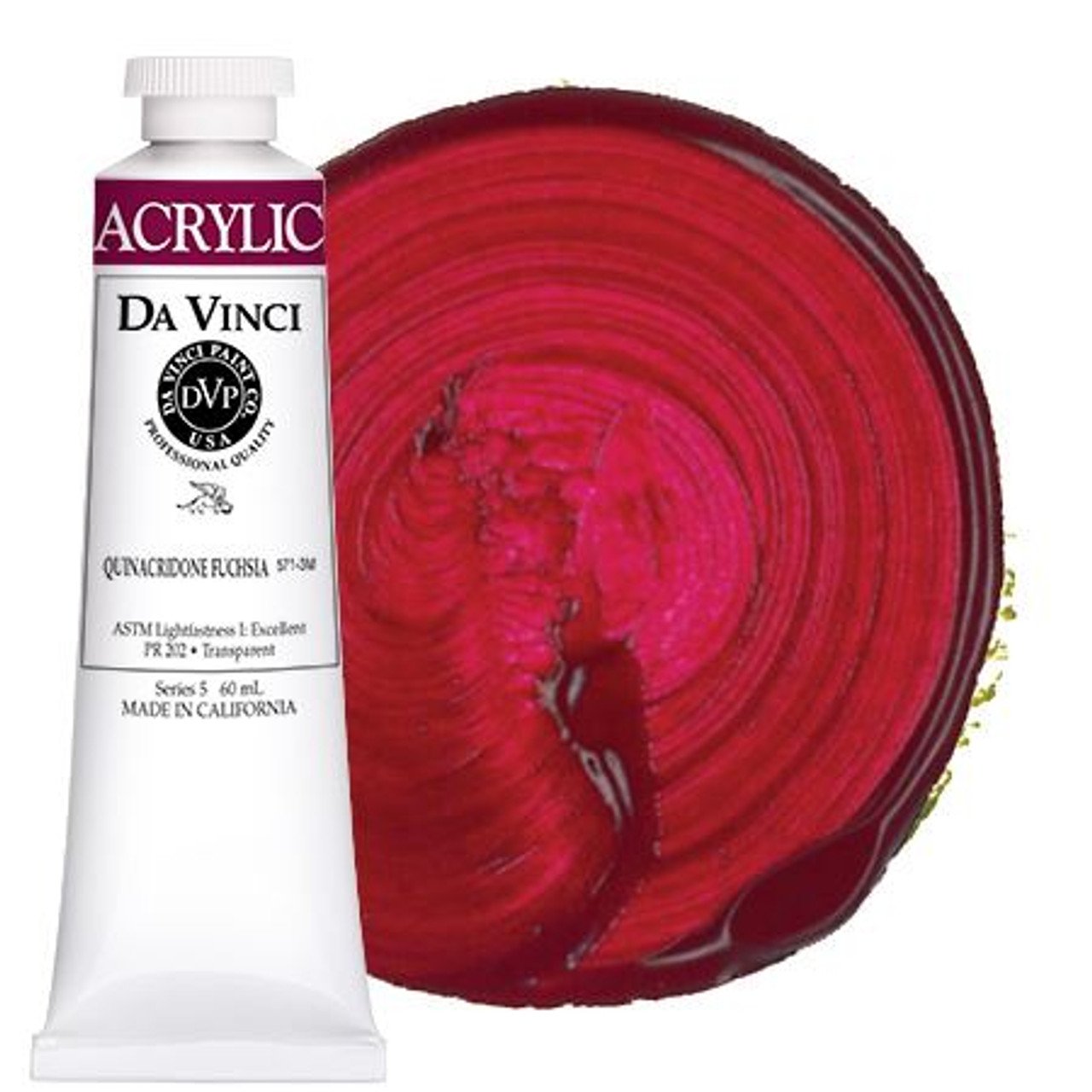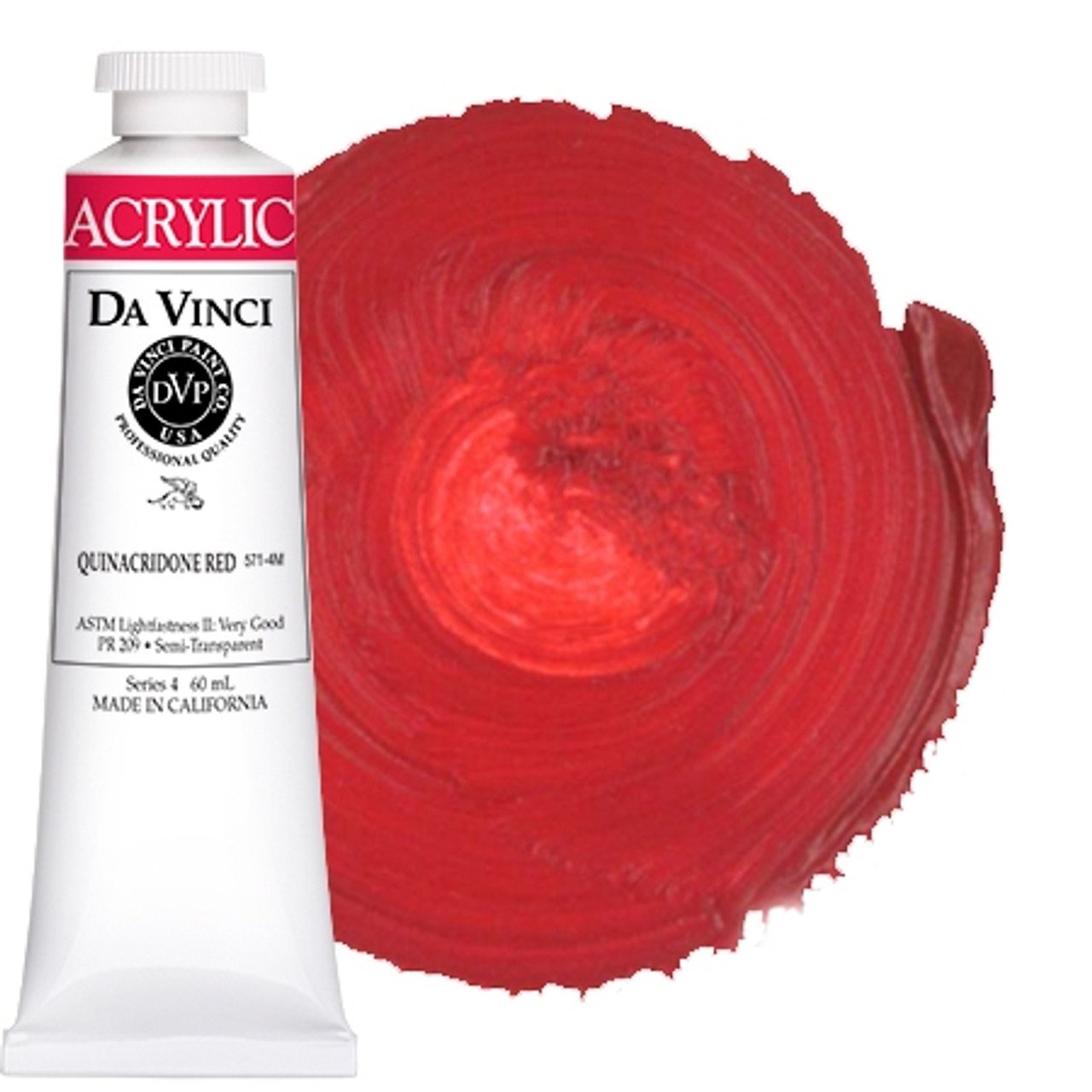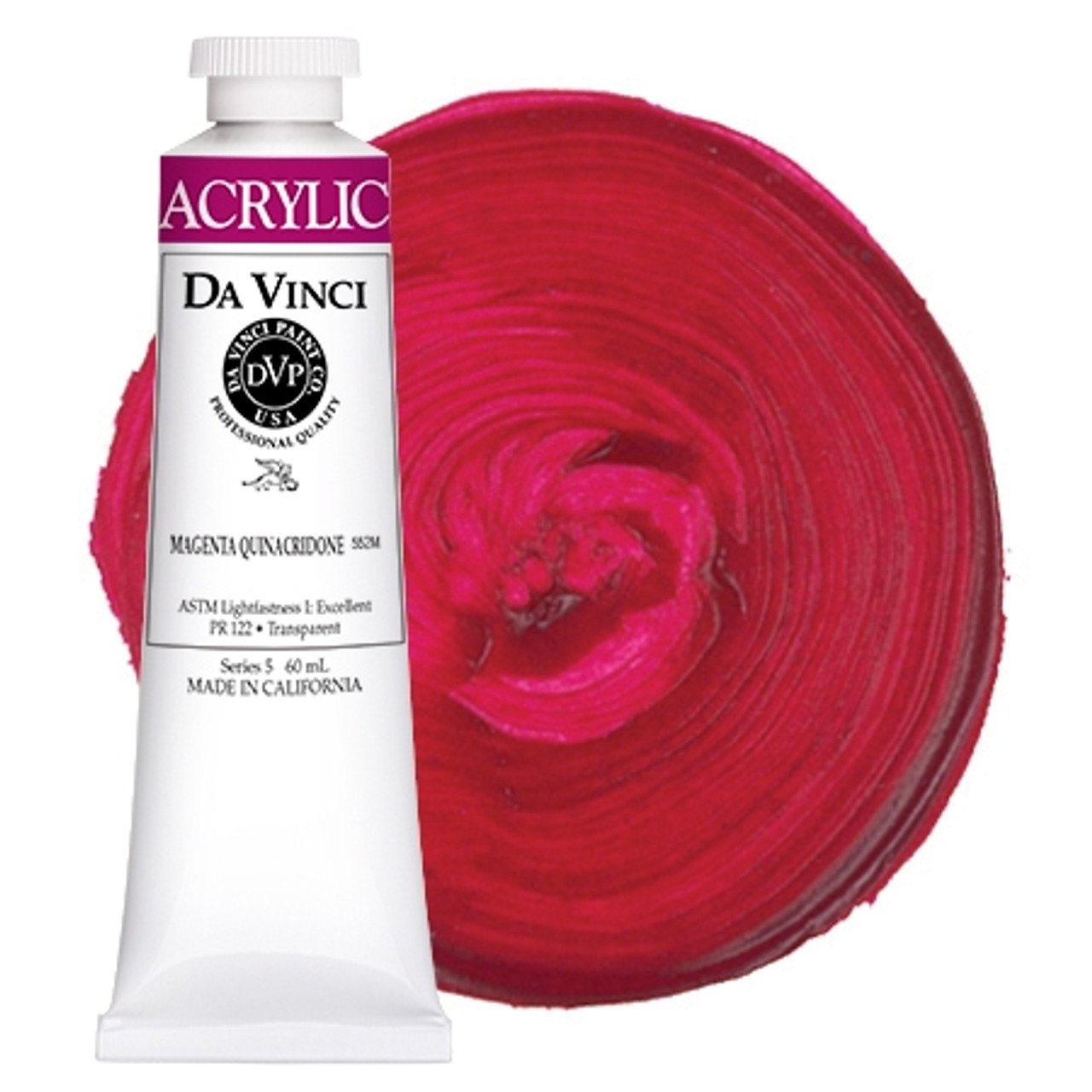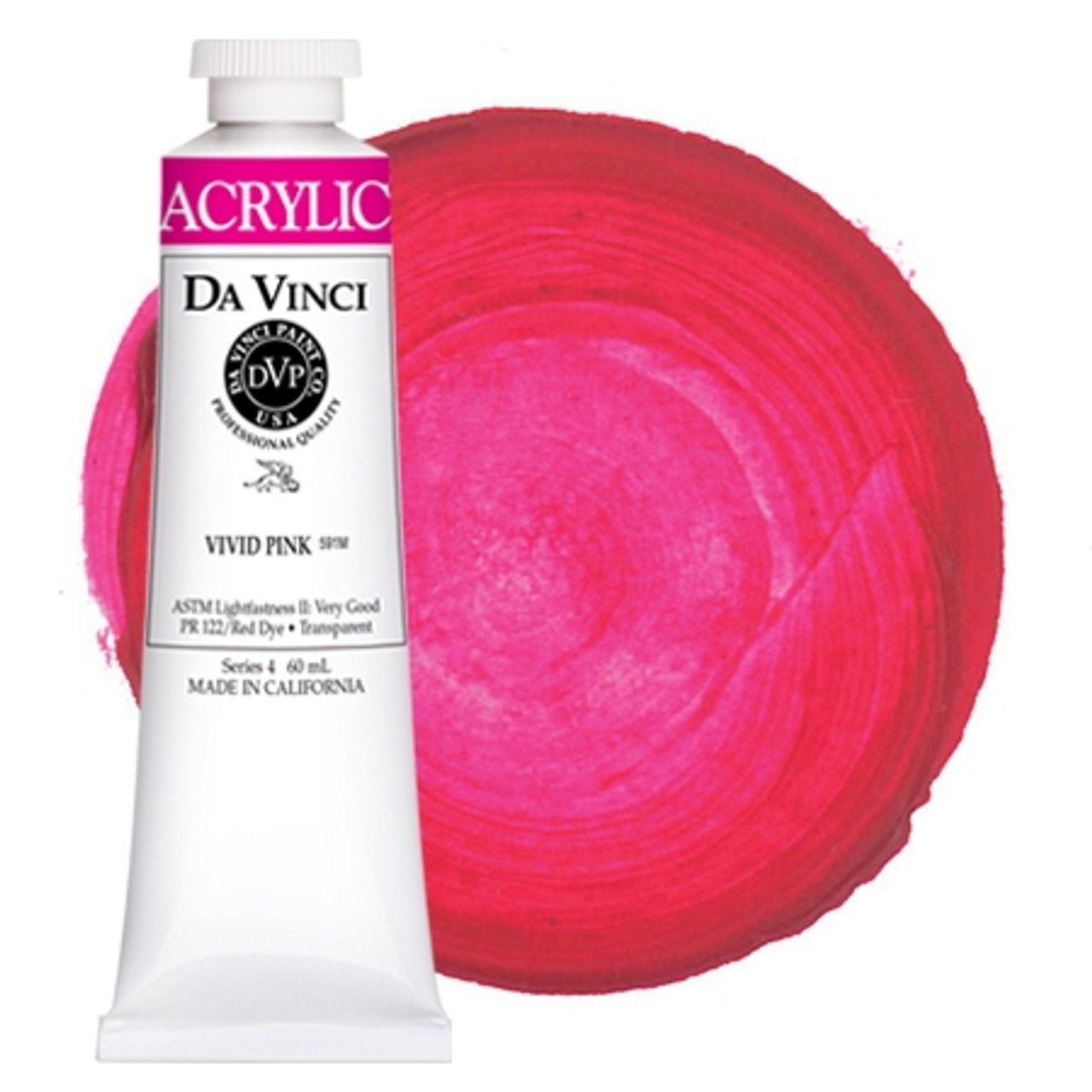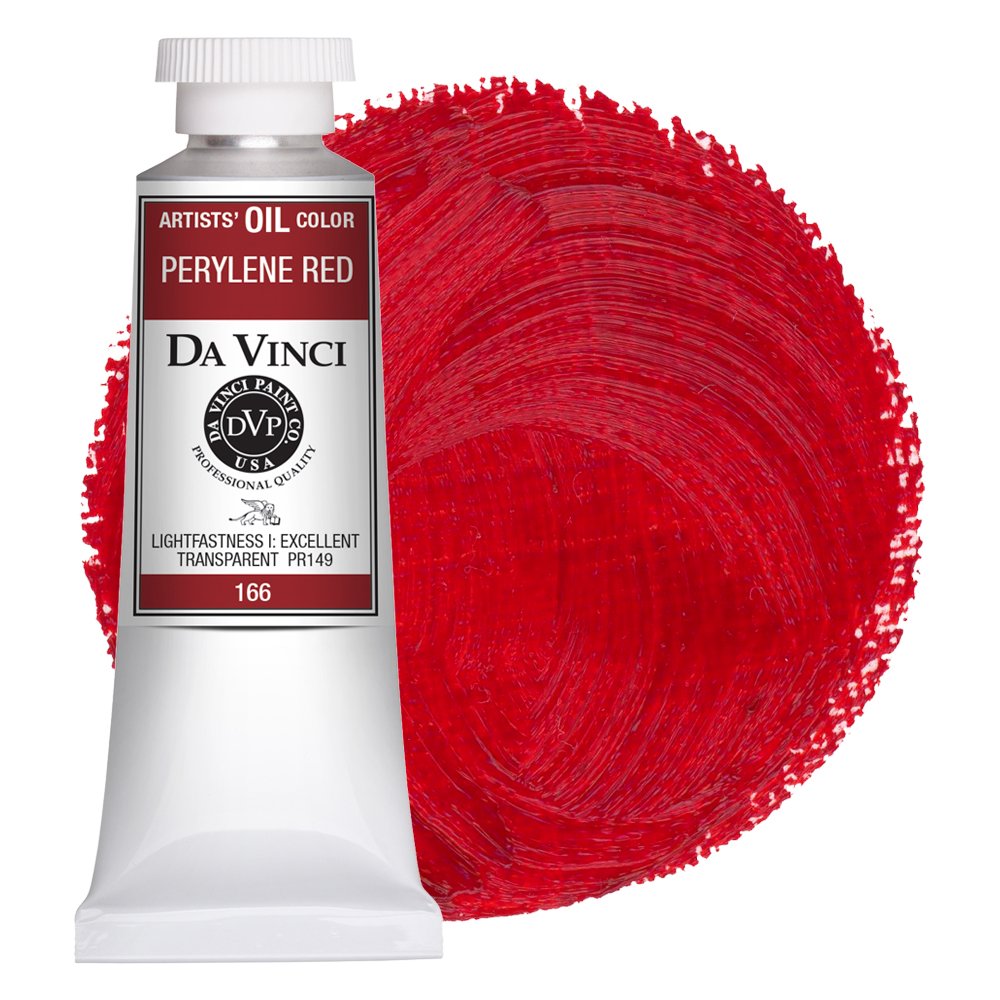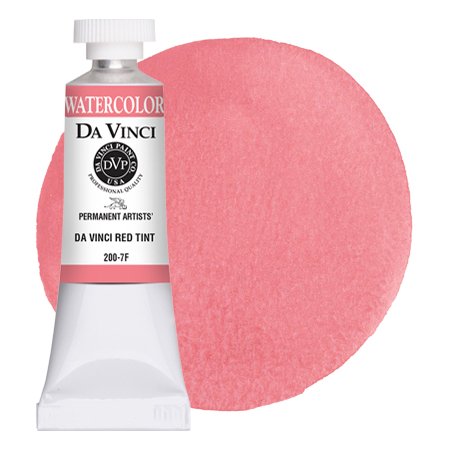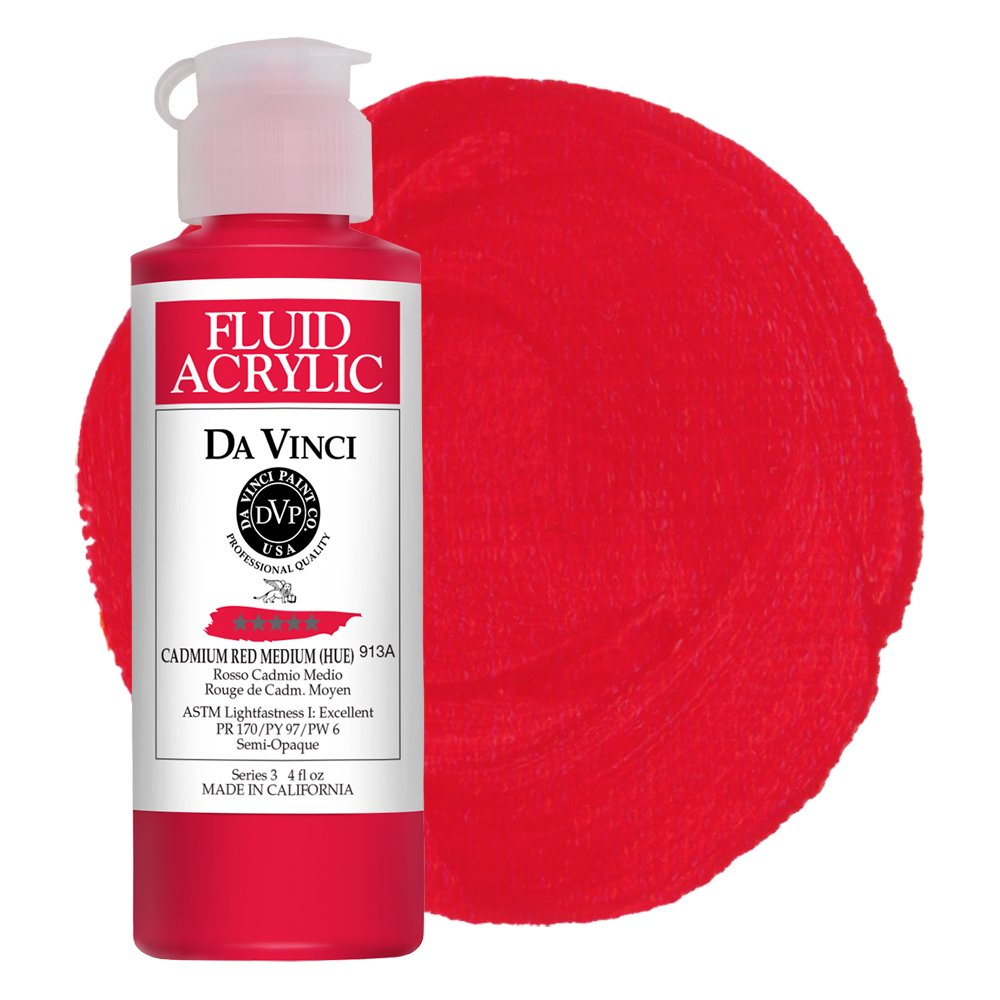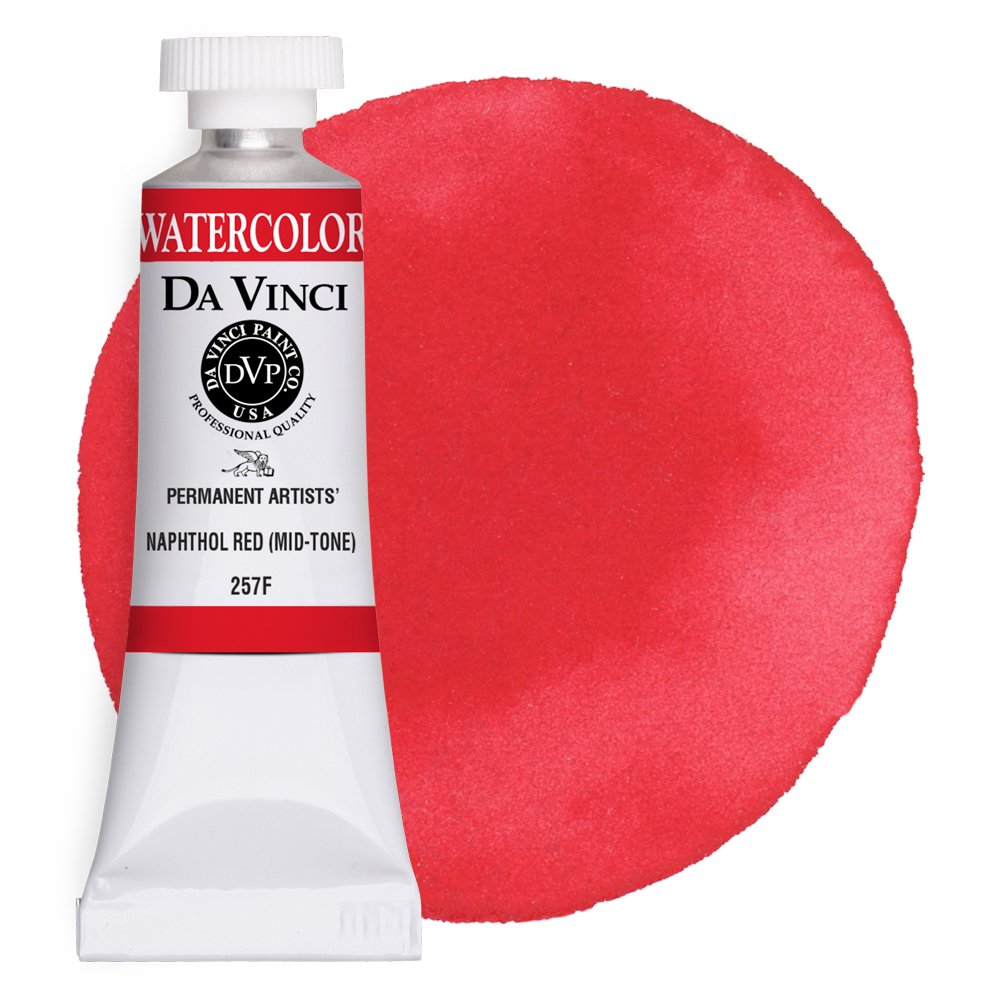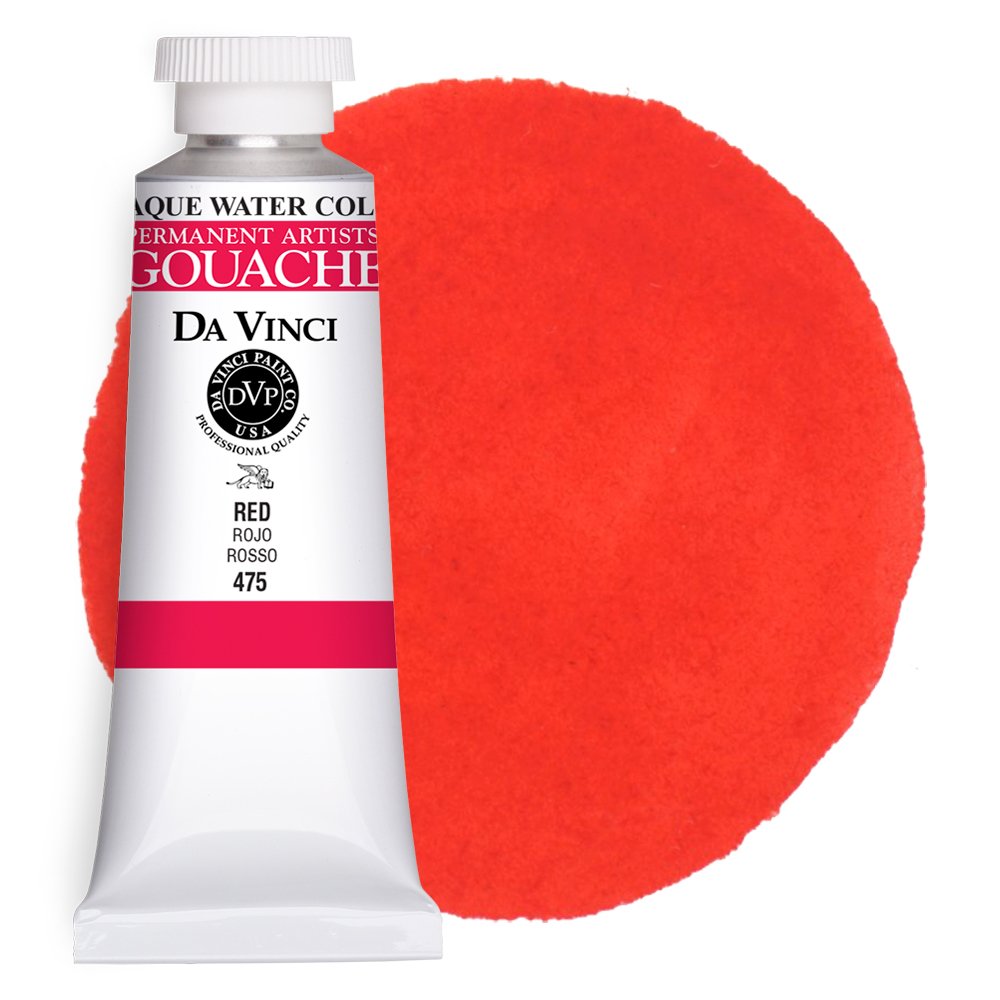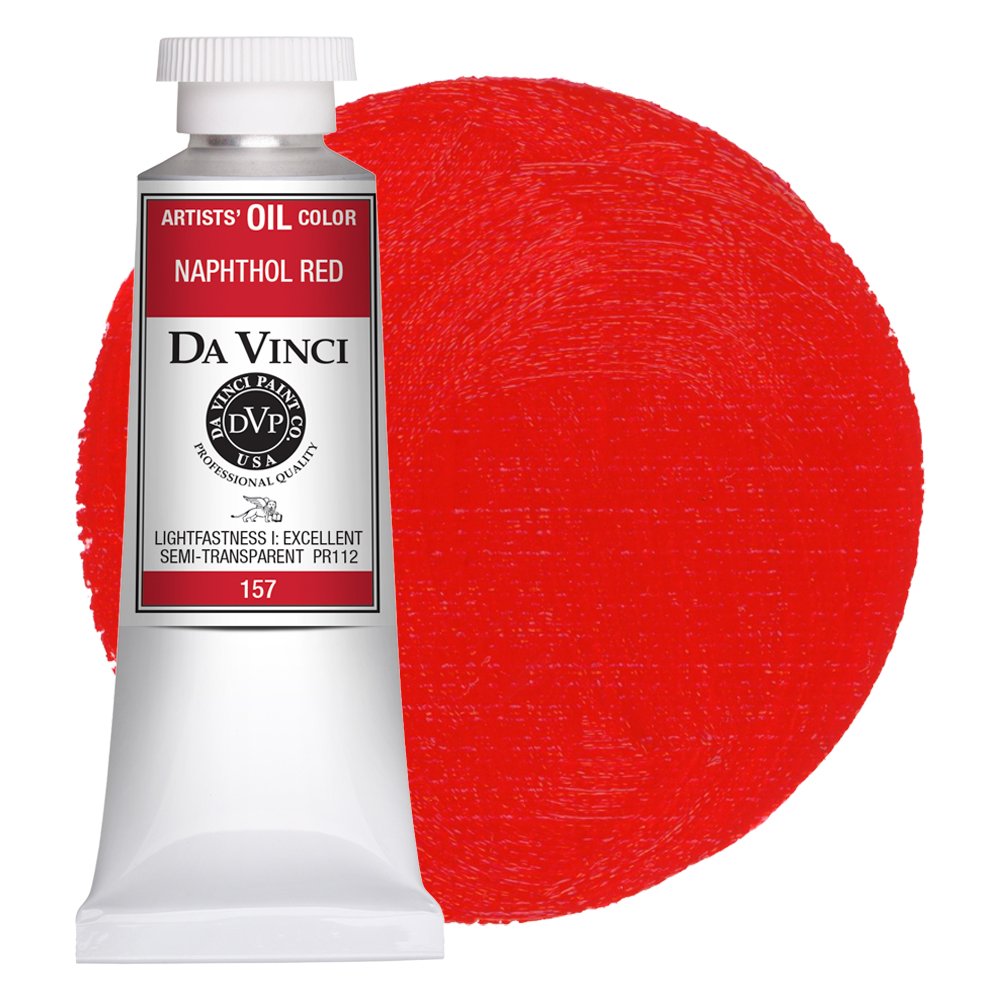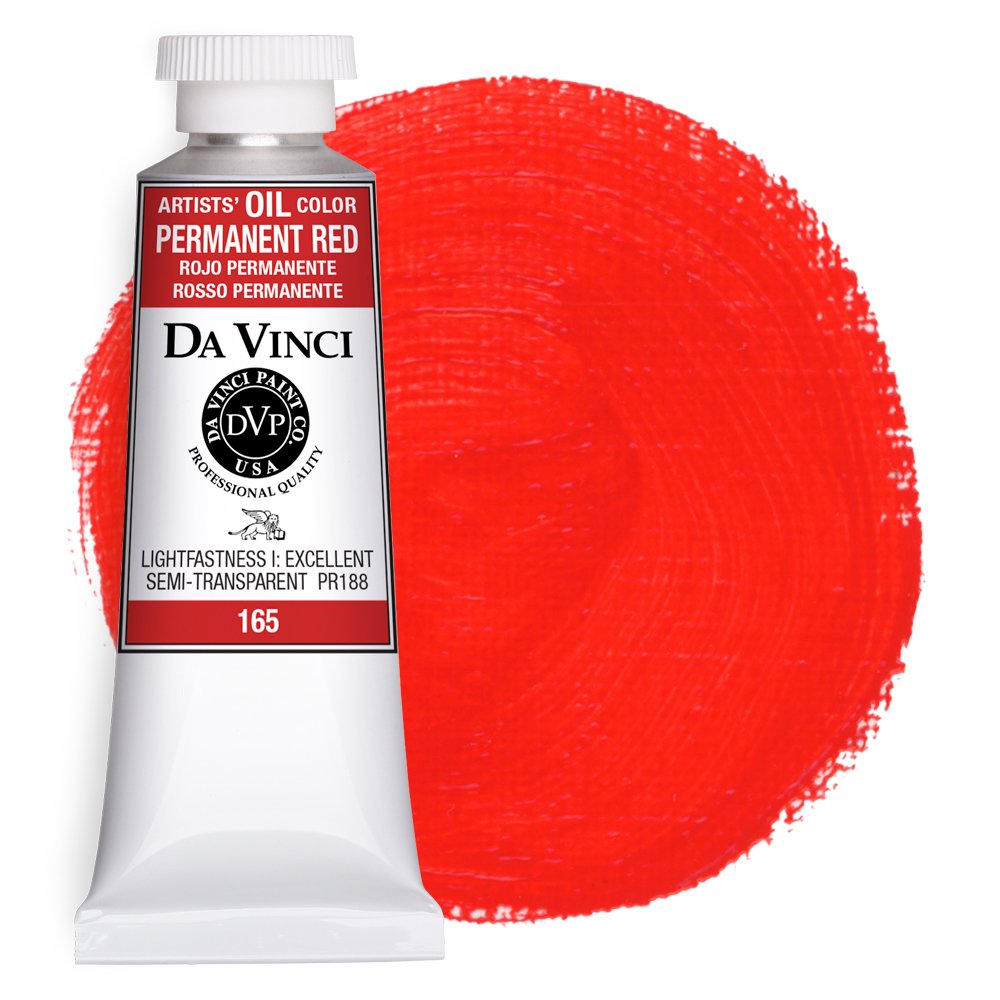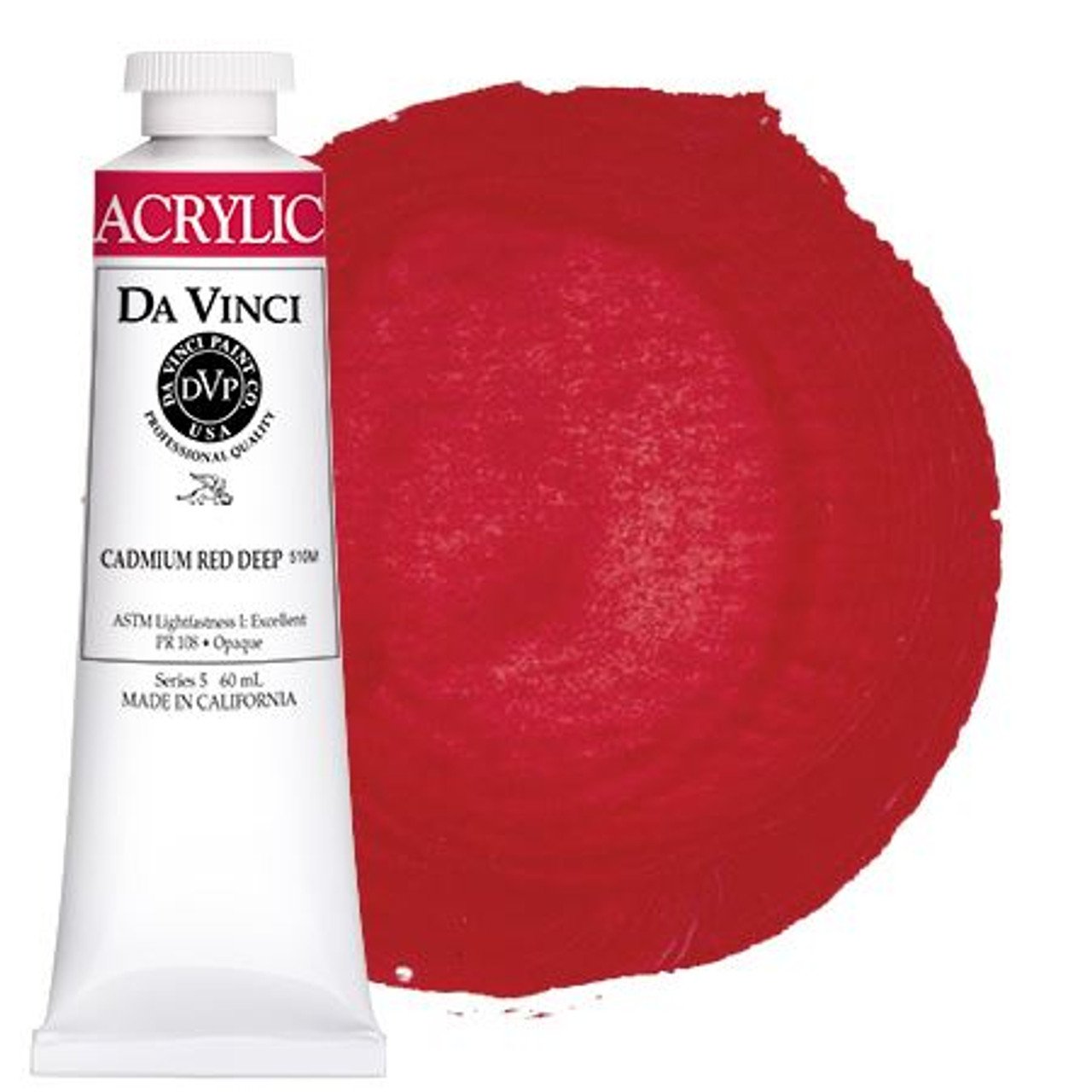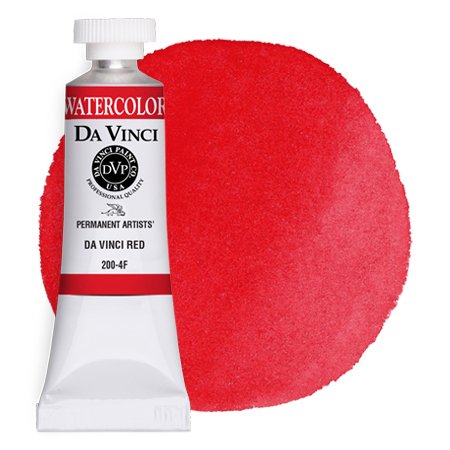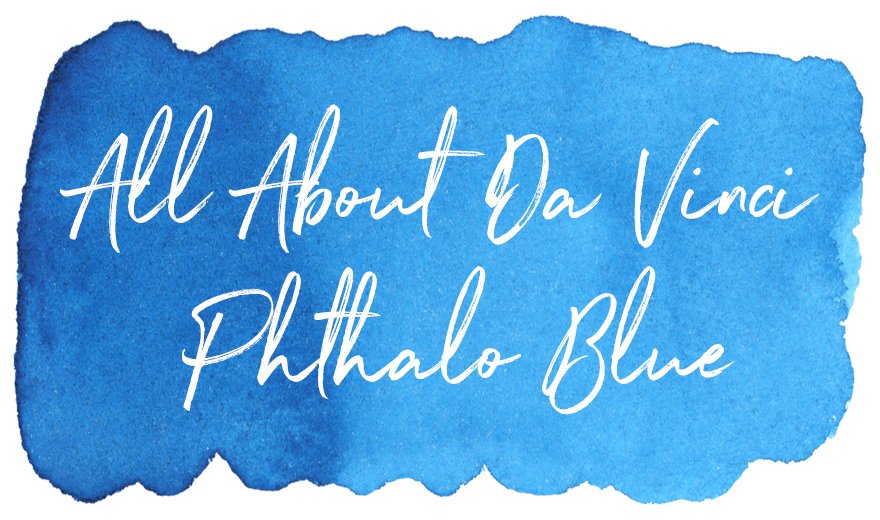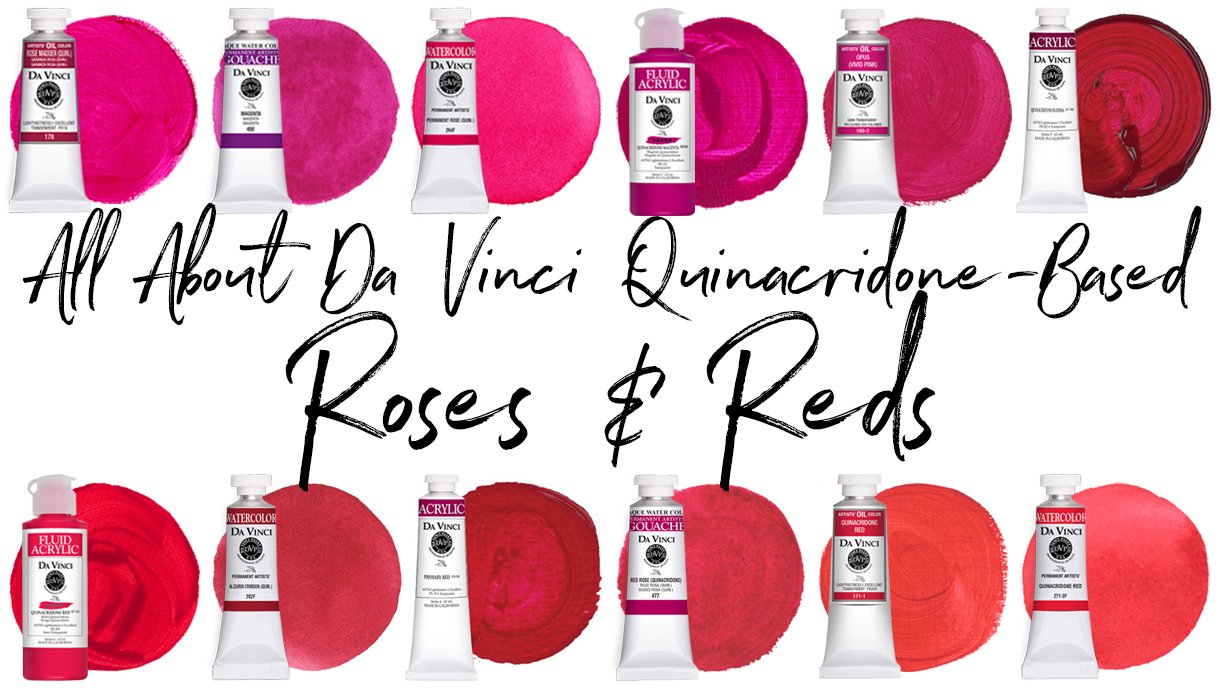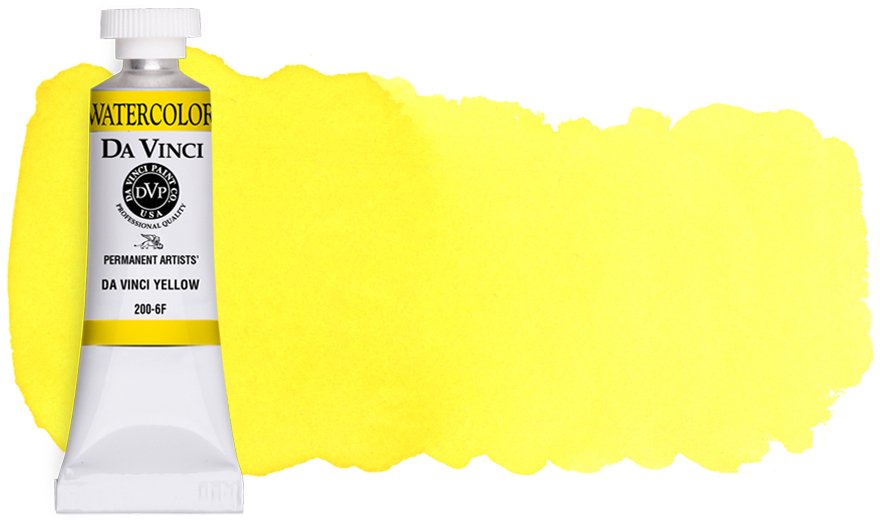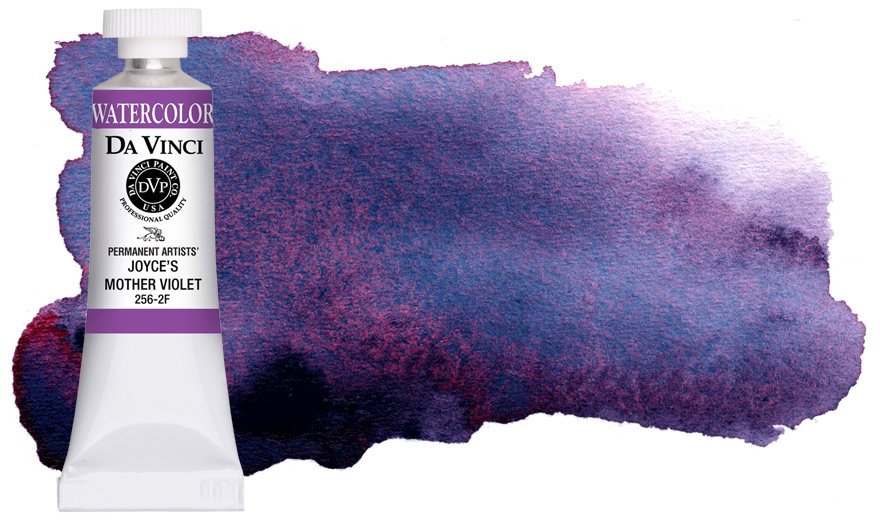Spotlight on Da Vinci Roses & Reds
Red and rose-colored pigments have been used by artists for centuries, but the earlier pigments used to make those colors were extracted from natural substances that often resulted in a color that was dull, opaque, or highly unstable when exposed to light or humidity. However, development and distribution of quinacridone pigments in the late 1950s changed all of that. Now manufacturers (and eventually, artists) had access to brilliant colors that were also highly transparent and stable.
Different manufacturing techniques like varying particle size and molecule structure produce a range in quinacridone pigments’ coloration, but the most common colors fall into the pink or red category. Quinacridone pigments’ hardy nature, beautiful intensity, abundant affordability, and glowing transparency quickly usurped nearly every other rose pigment on the market, including centuries old favorites like alizarin and madder. In fact, Da Vinci Paints was the first to develop a Permanent Alizarin Crimson, a lightfast and reliable option to the traditional, fugitive Alizarin Crimson. You can learn more about us and our story here.
The name ‘quinacridone’ is often shortened by those who know it to a simple ‘quin,’ but this is highly accurate also. The Latin root of ‘quin’ conveys the number five, for example like in quintuplet and quinquennial. The ‘quin’ in quinicridone simply refers to the five-sided molecular structure of its pigment. Quinacridone pigments’ multi-faceted, super-fine characteristics allow its colors to easily blend and layer in a painting, while the intense tinting strength easily produces clear, vibrant mixes. It’s no surprised that artists love quinacridones!
Da Vinci Paints offers artists a wide variety of professional-grade pinks, roses, fuchsias, crimsons, and reds, and many of these are crafted using quinacridone pigments. Let’s take a look at and compare the different quinacridone-based roses and reds that Da Vinci offers so you can find a quin (or five) that you love!
Da Vinci Roses & Reds With Pigment Violet 19
Da Vinci Paints uses several different quinacridone pigments to achieve a variety of colors for artists, and these can be identified on our website and on each paint tube by the color index letter and number. One of the most commonly used quinacridones is Pigment Violet 19, or PV19. Pigment Violet 19 has a wide range of coloration and can vary from a brilliant pink to a soft rose, or from a muted crimson to a vivid violet. Click on each image to learn more about the individual color featured and view example mixes, where available.
Da Vinci Watercolors & Gouache
Da Vinci Oils
Da Vinci Heavy Body & Fluid Acrylics
Other Quinacridone Options
Although PV19 is highly popular with artists, Da Vinci Paints also uses other quinacridone pigments like Pigment Red 122 (PR122), 202 (PR202), or 129 (PR129) to create a wide range of roses, reds, magentas, and more. Although the color index names and numbers aren’t extremely important — all Da Vinci Paints’ are carefully crafted with the highest quality of artist pigments available — it can help artists discover and recognize the colors and pigments that they love. Click on each image to learn more about the individual color featured and view example mixes, where available.
In addition to the quinacridone colors mentioned above, Da Vinci Paints carries other colors made with quinacridone pigments. For example, PV19 is used to create many of our purples and violets, and we also use quinacridone pigments in many of our convenience colors. We also offer artists a large selection of roses, pinks, reds, and more that are made with non-quinacridone pigments. All of our pigments and paints are of the highest quality available and excellent for all artistic applications. Below are just a few examples of Da Vinci's many roses and reds, so click on the images below or visit our main site to explore our complete collection.
SUBSCRIBE TO DA VINCI PAINTS
Receive notifications of new posts & promotional offers.
Da Vinci Paints never shares subscriber information.
We'd love to see what you create with Da Vinci Paints! Be sure to follow & tag us on social media.
@DaVinciPaints #DaVinciMoment

